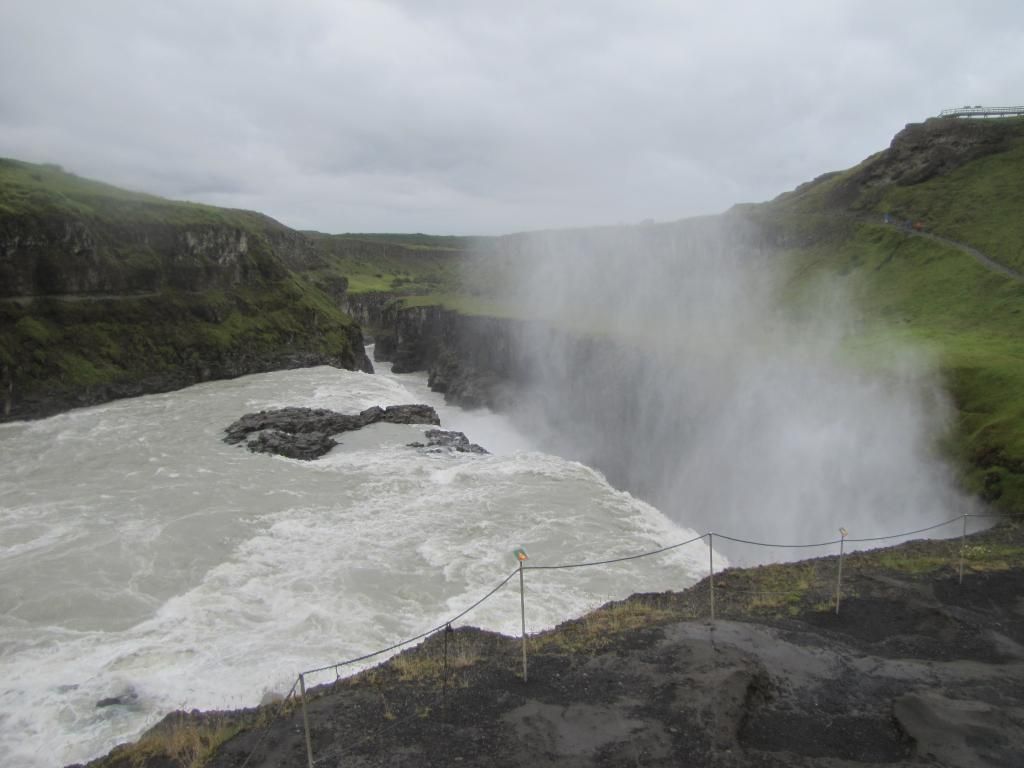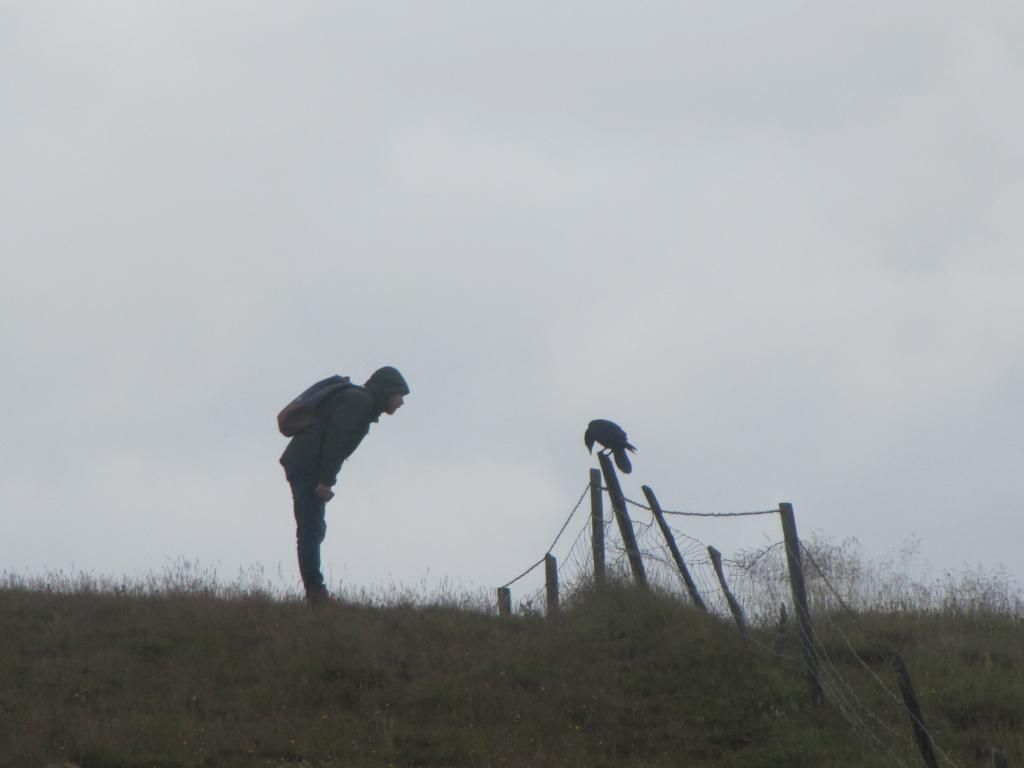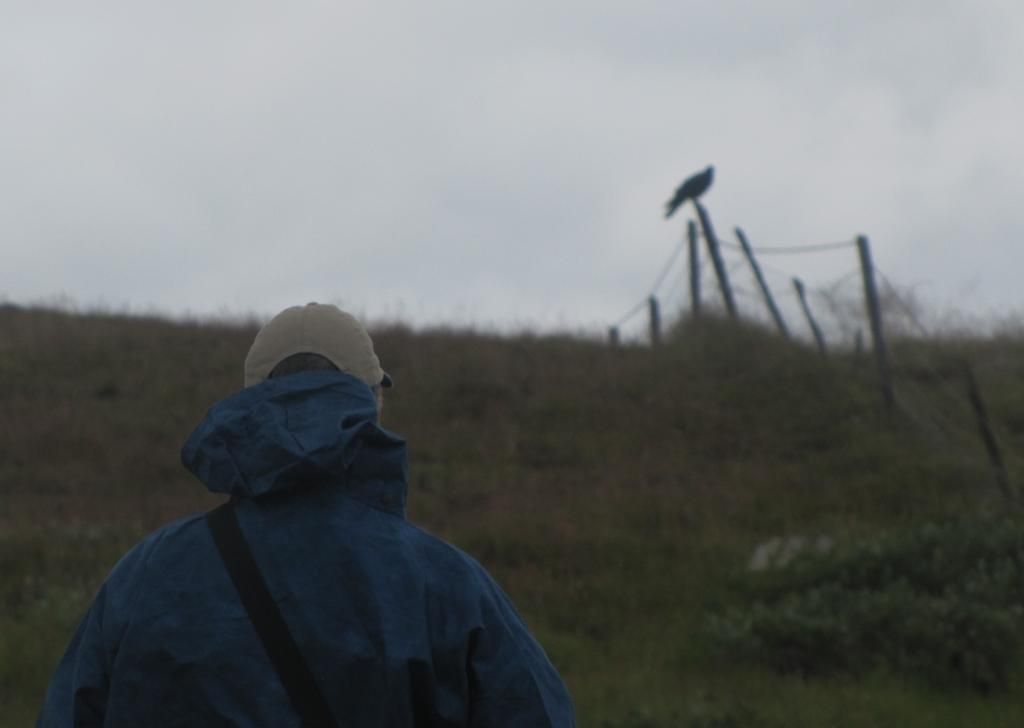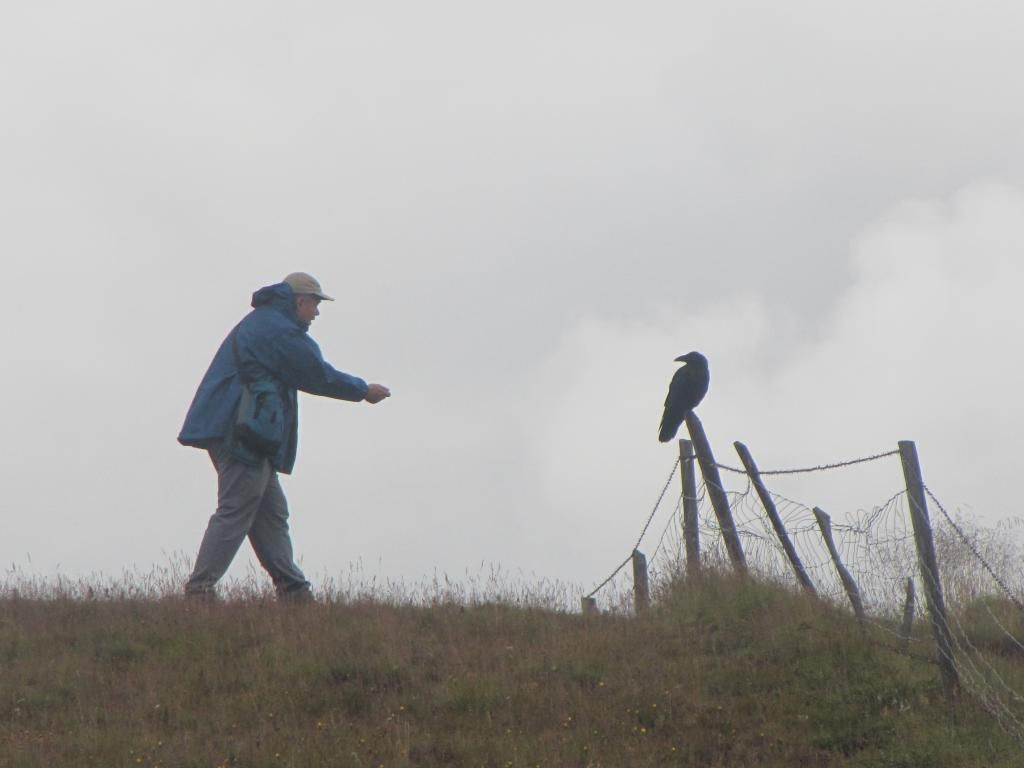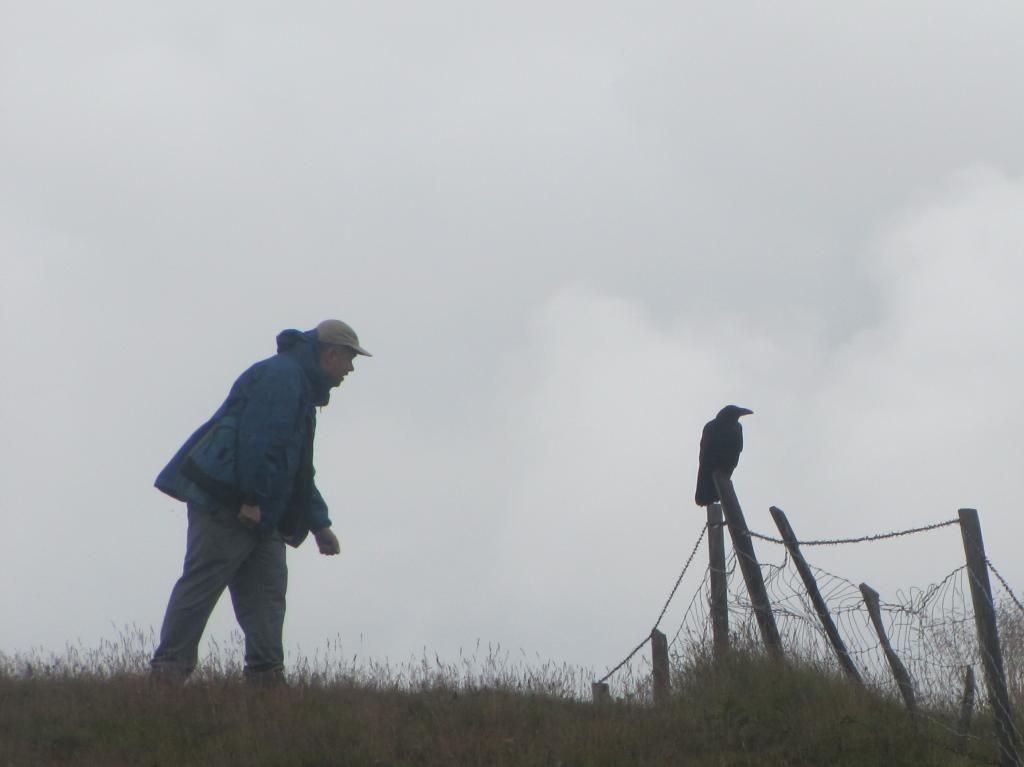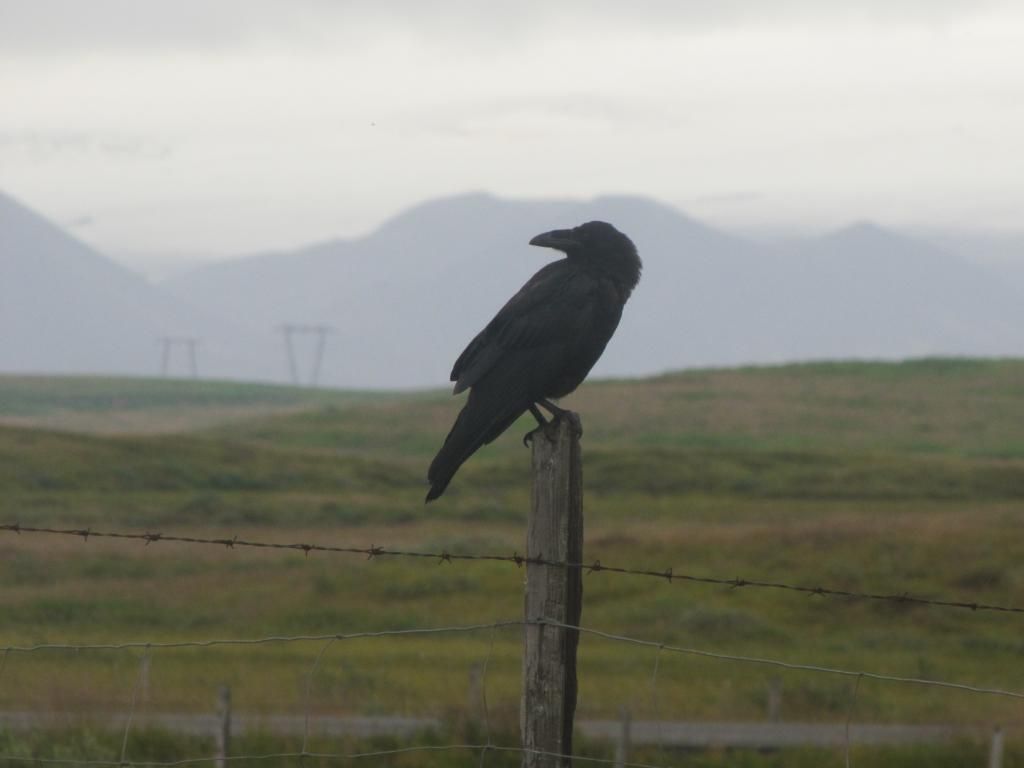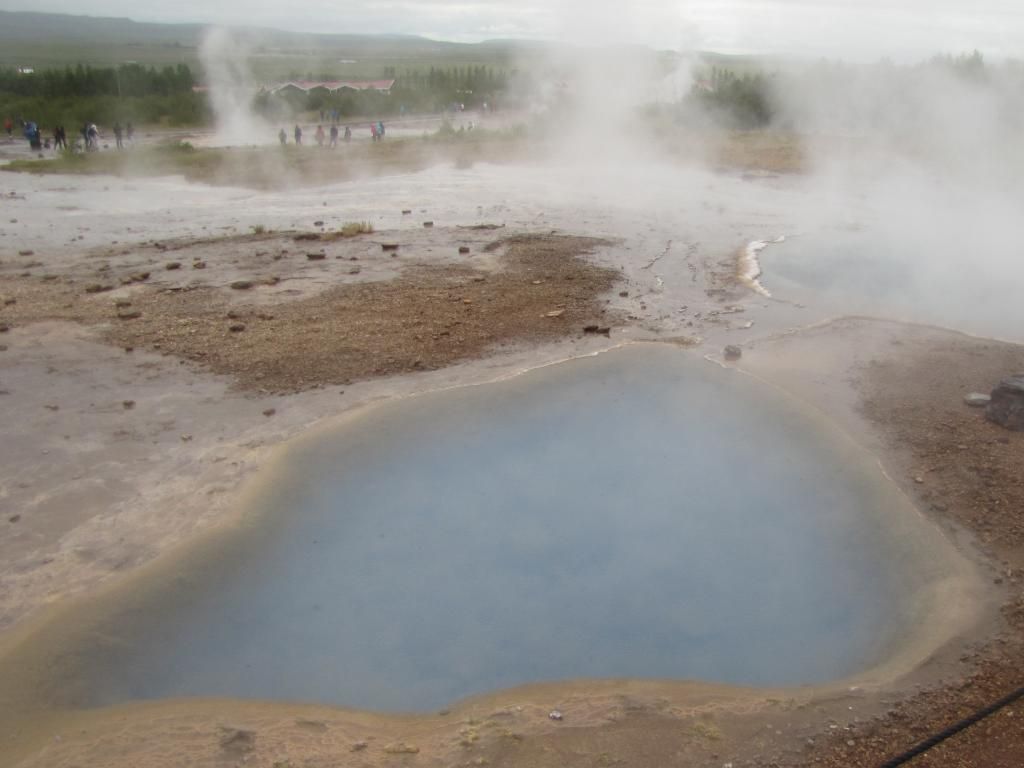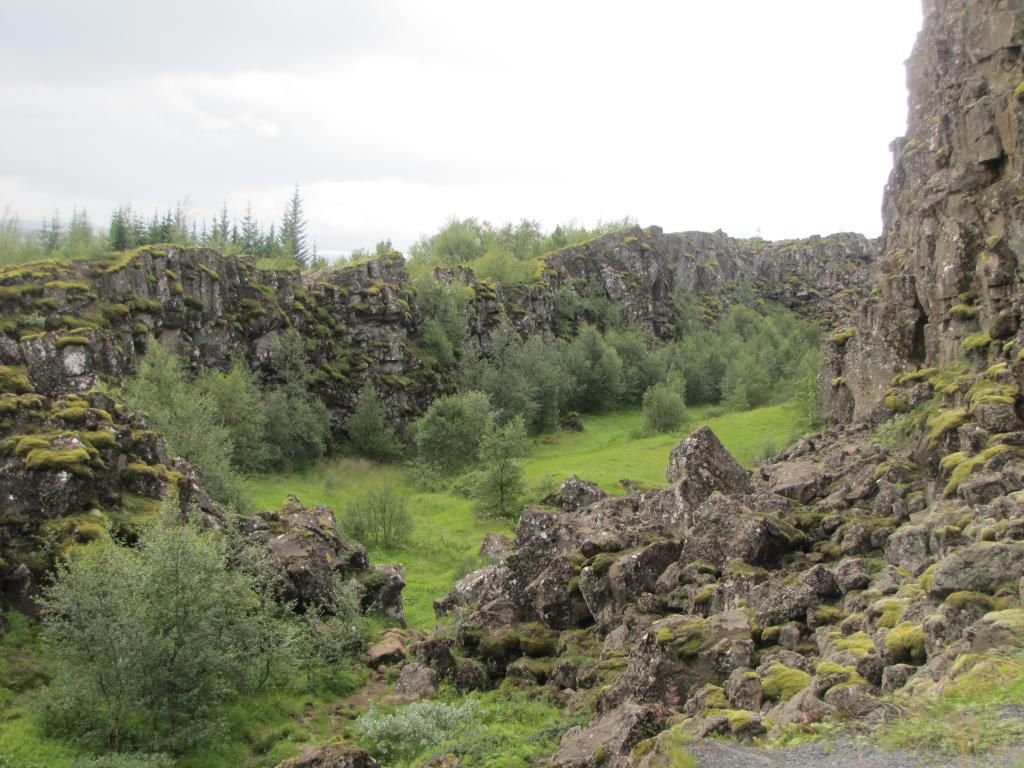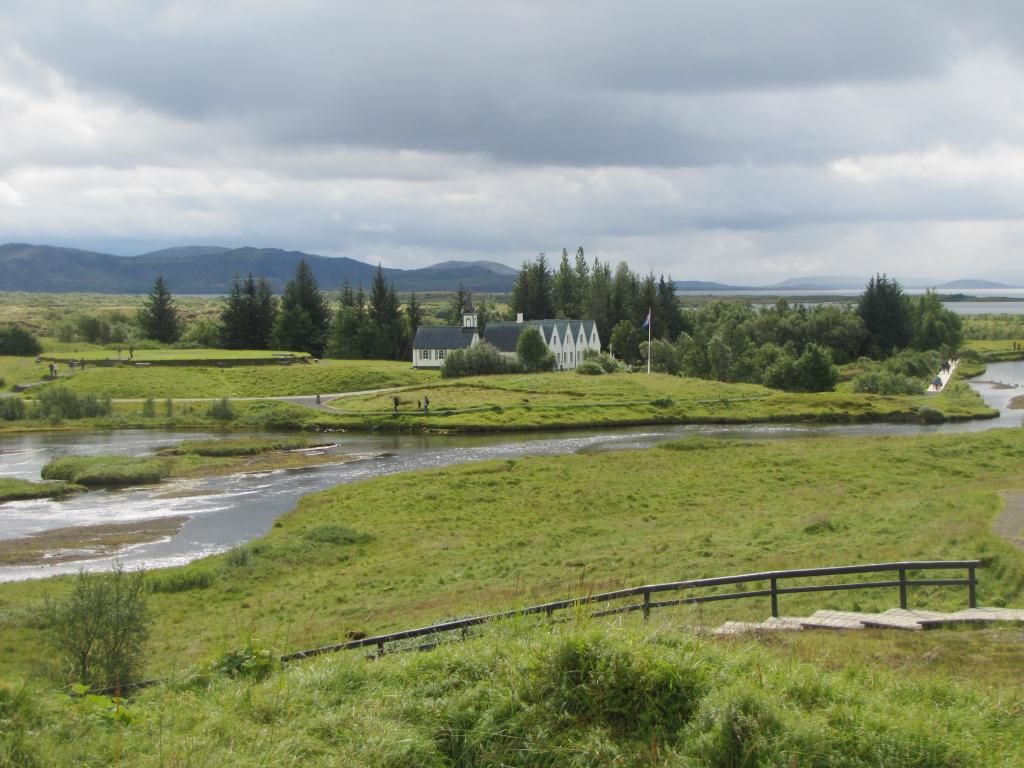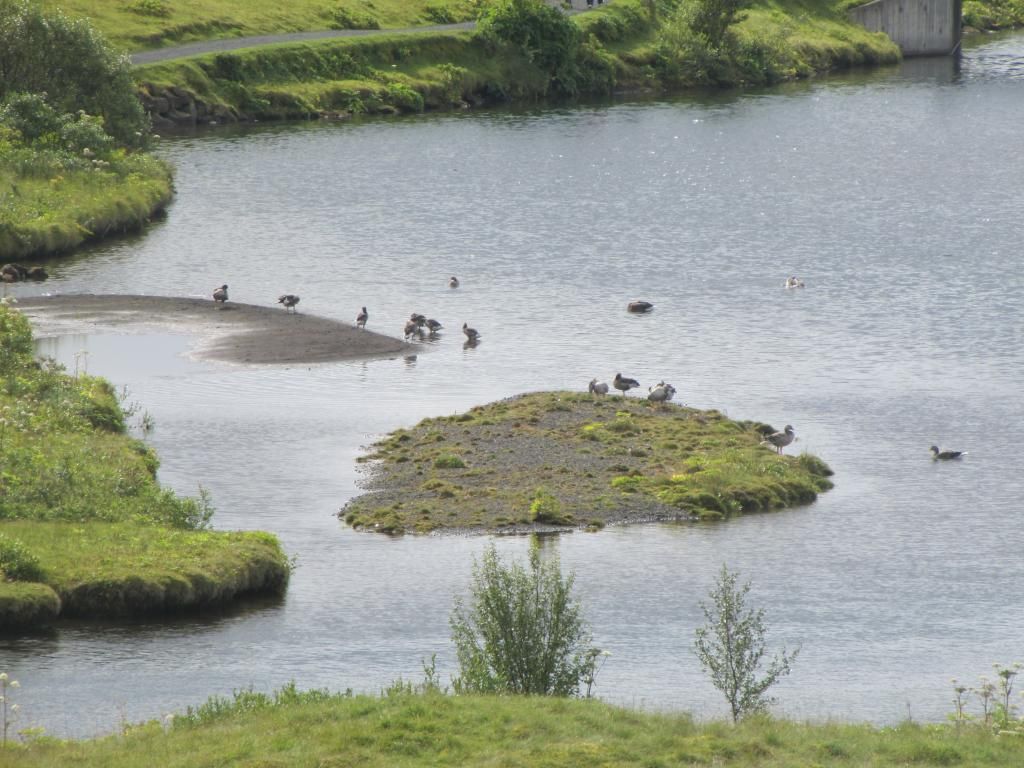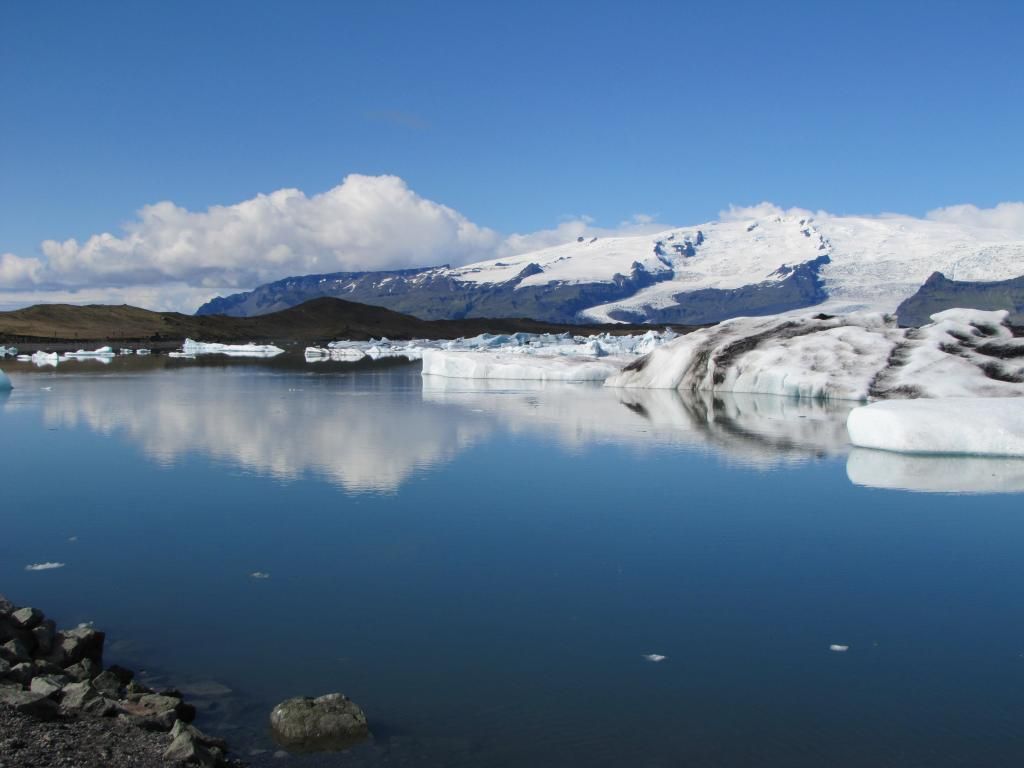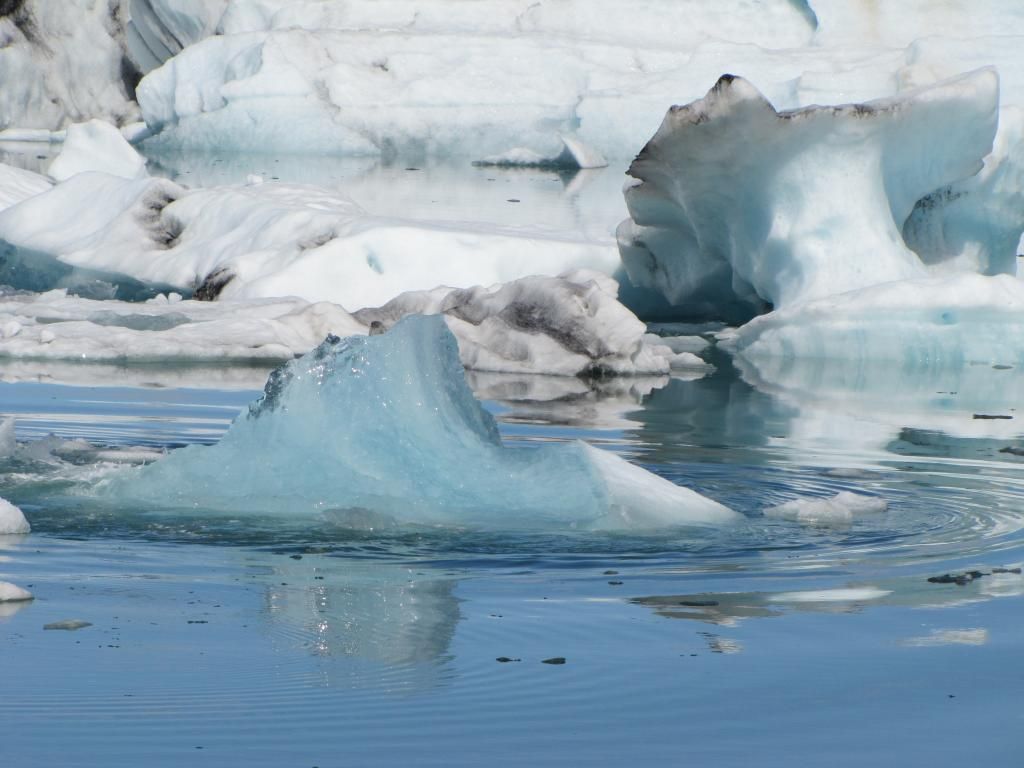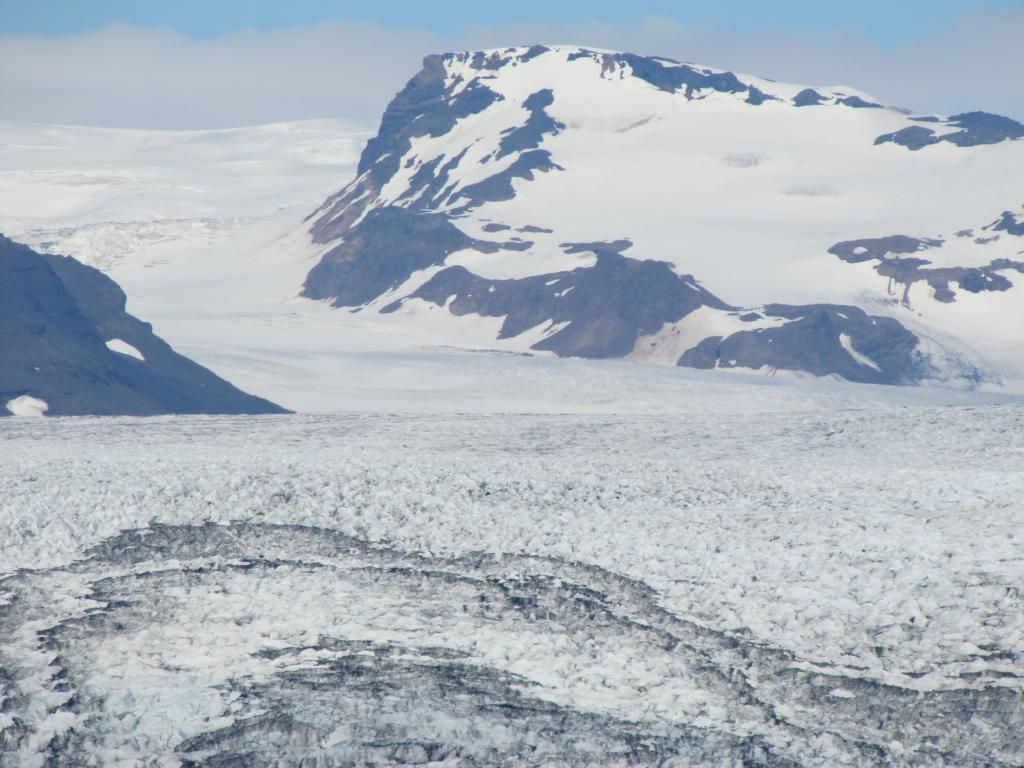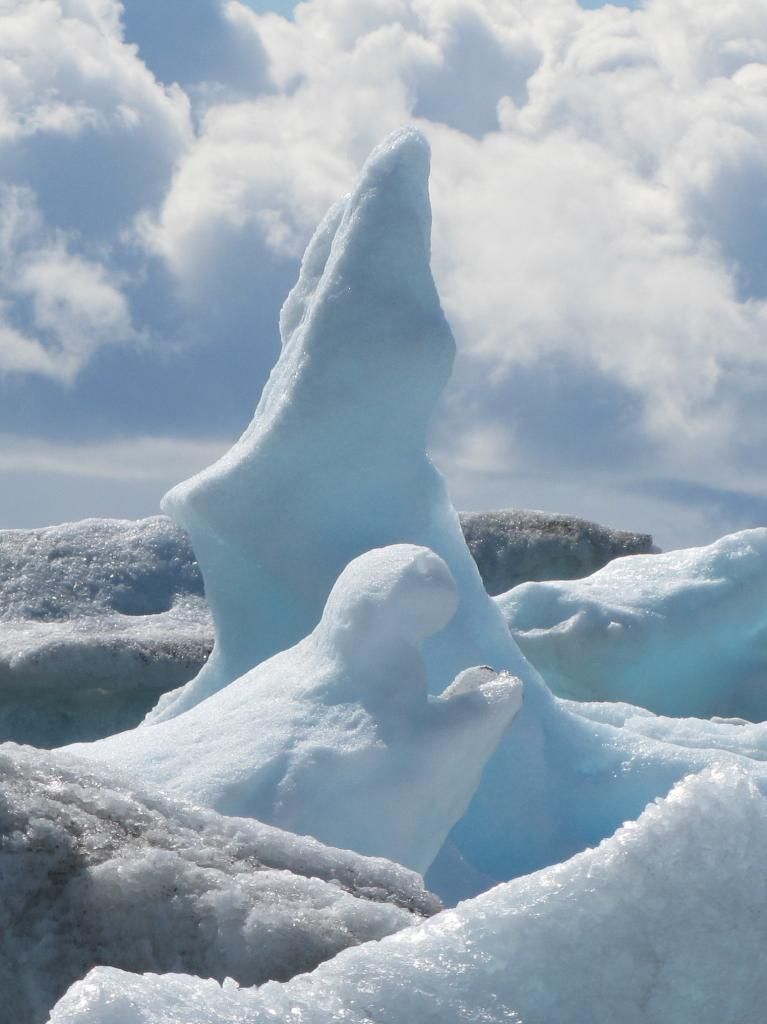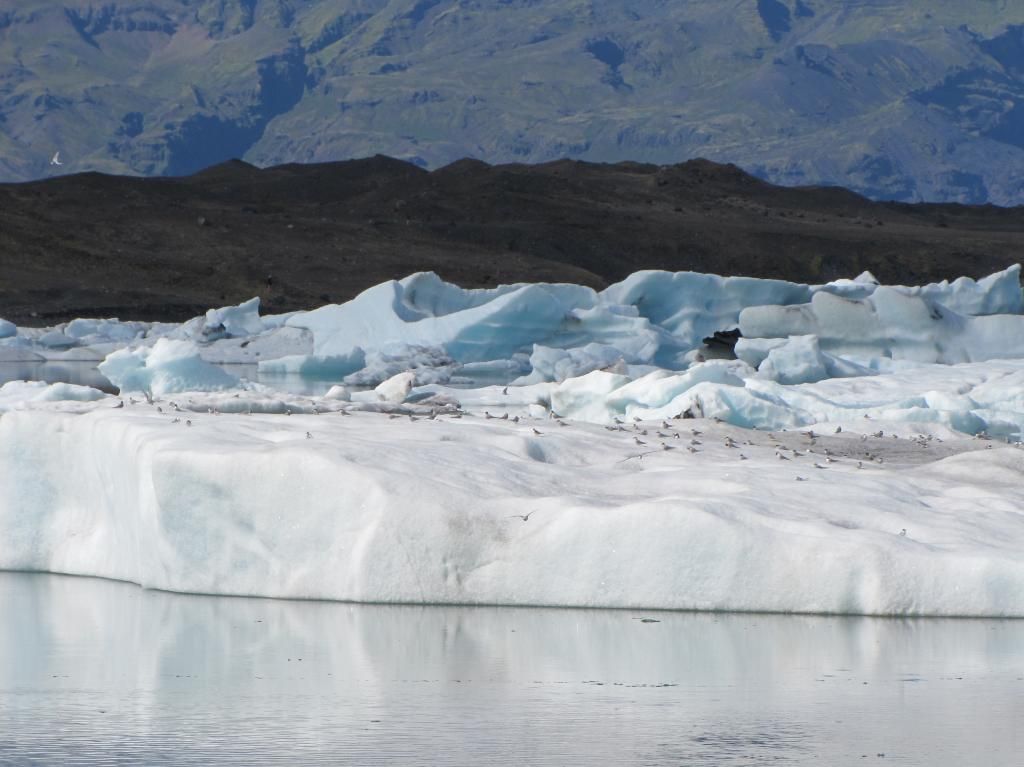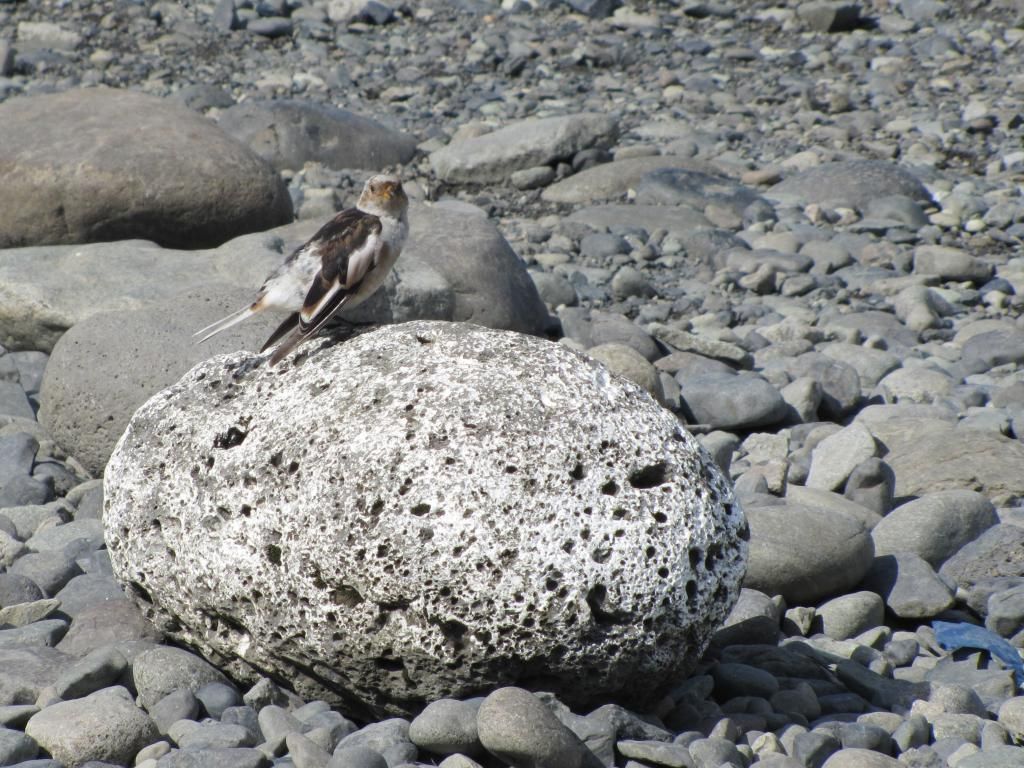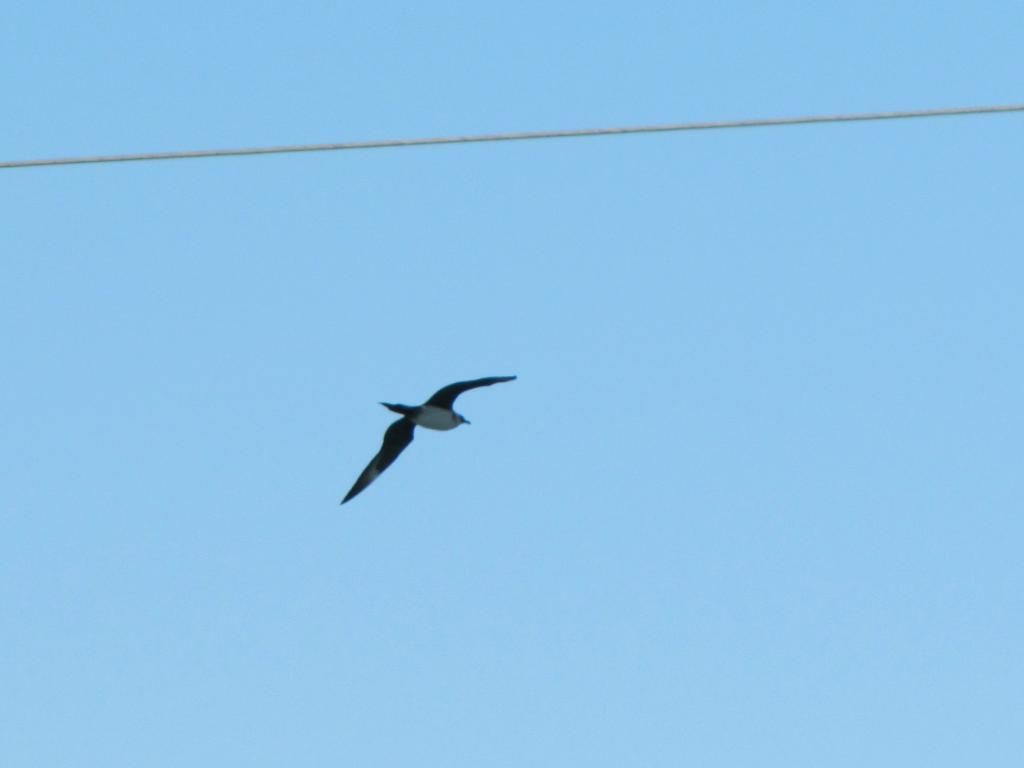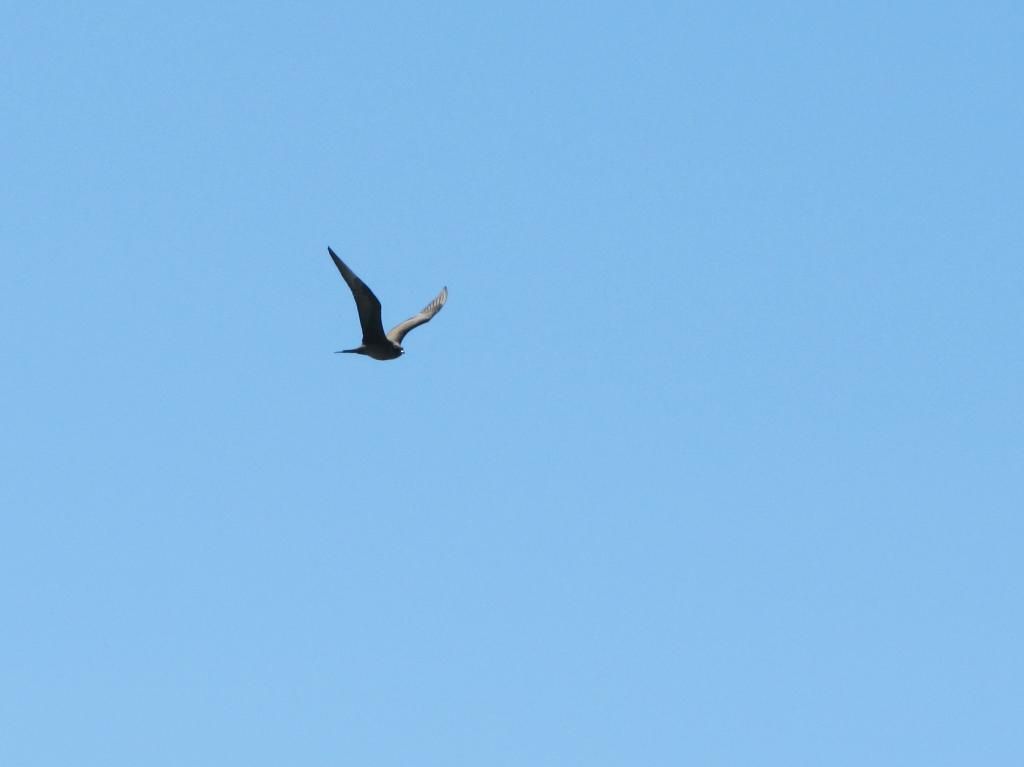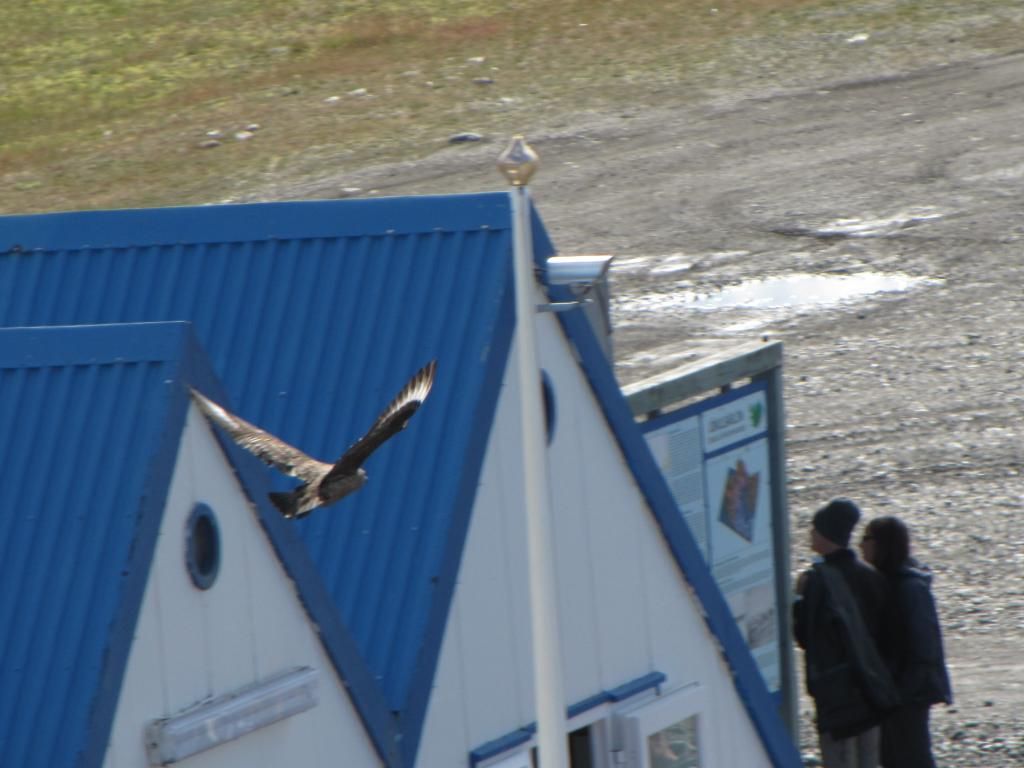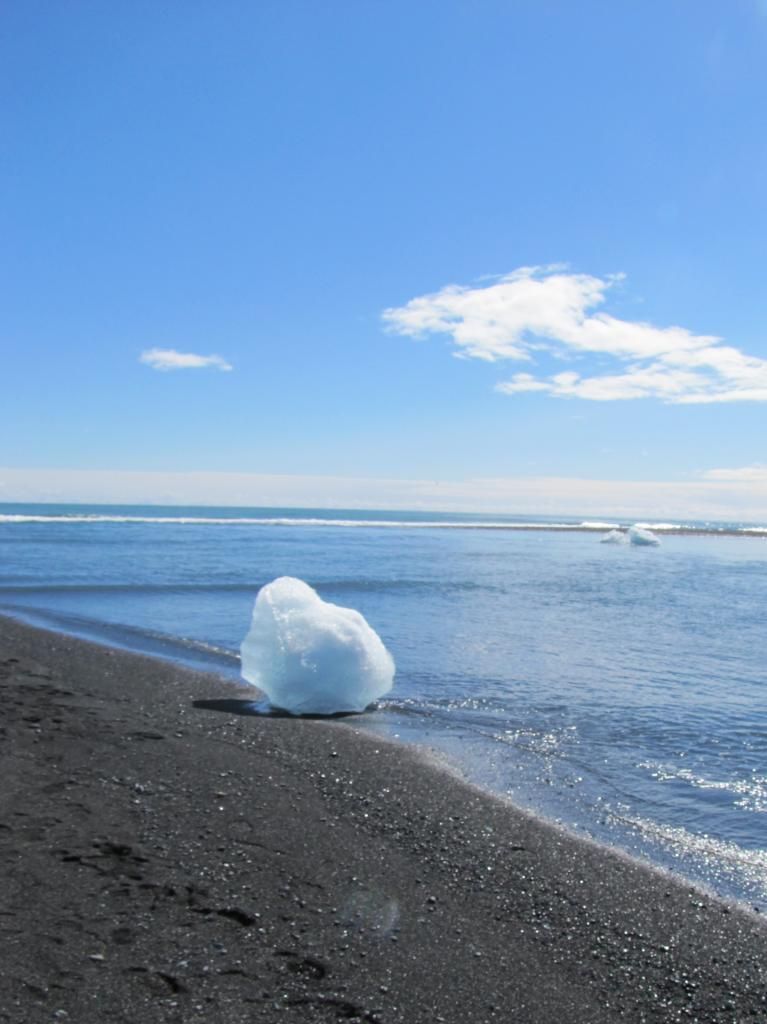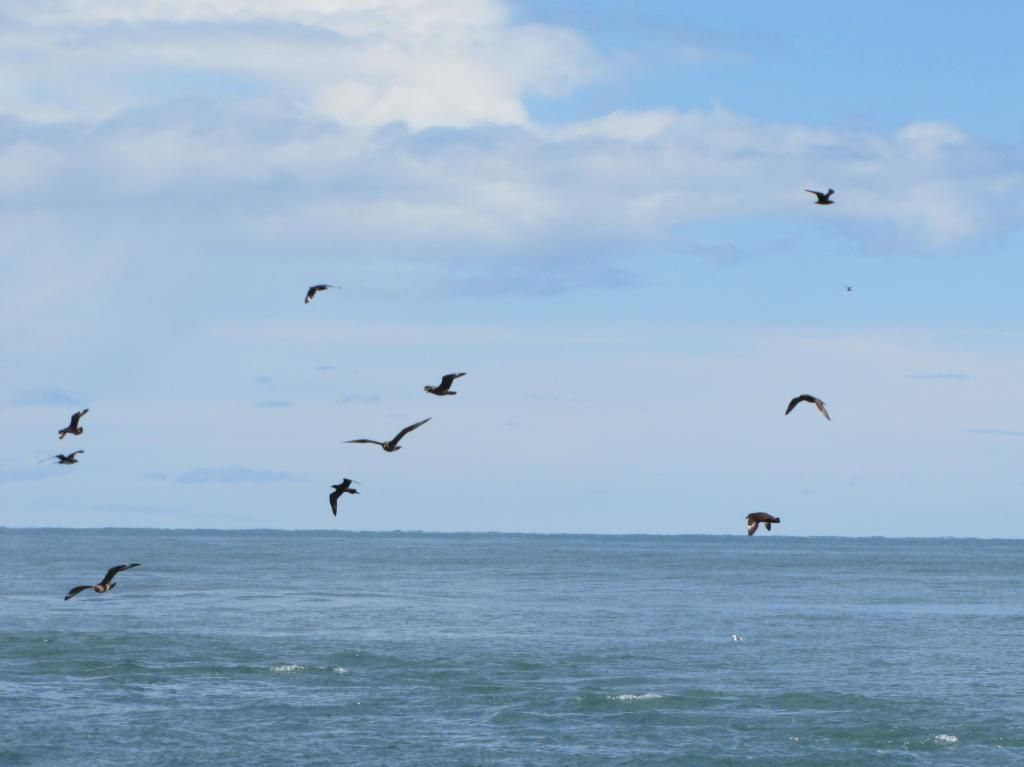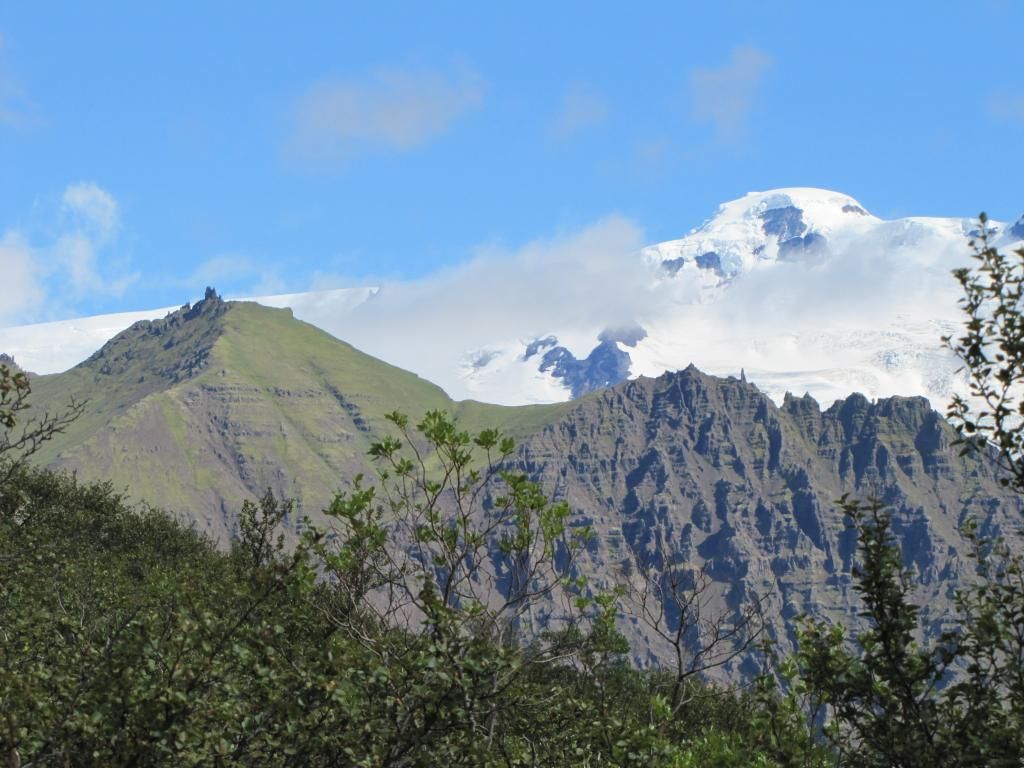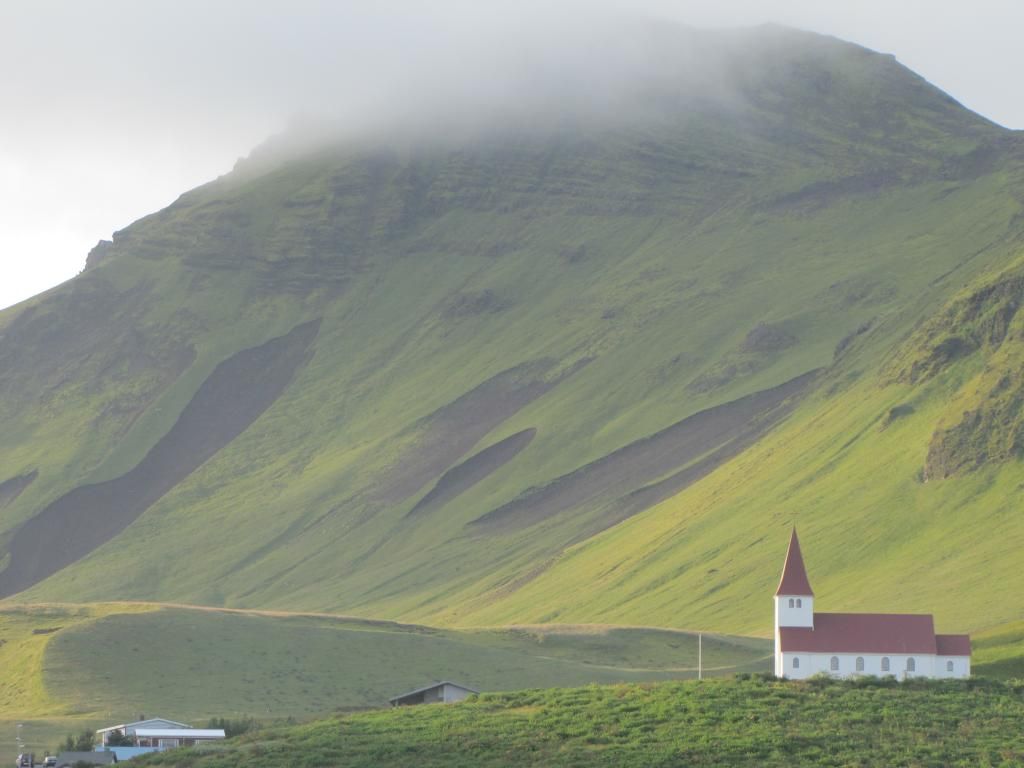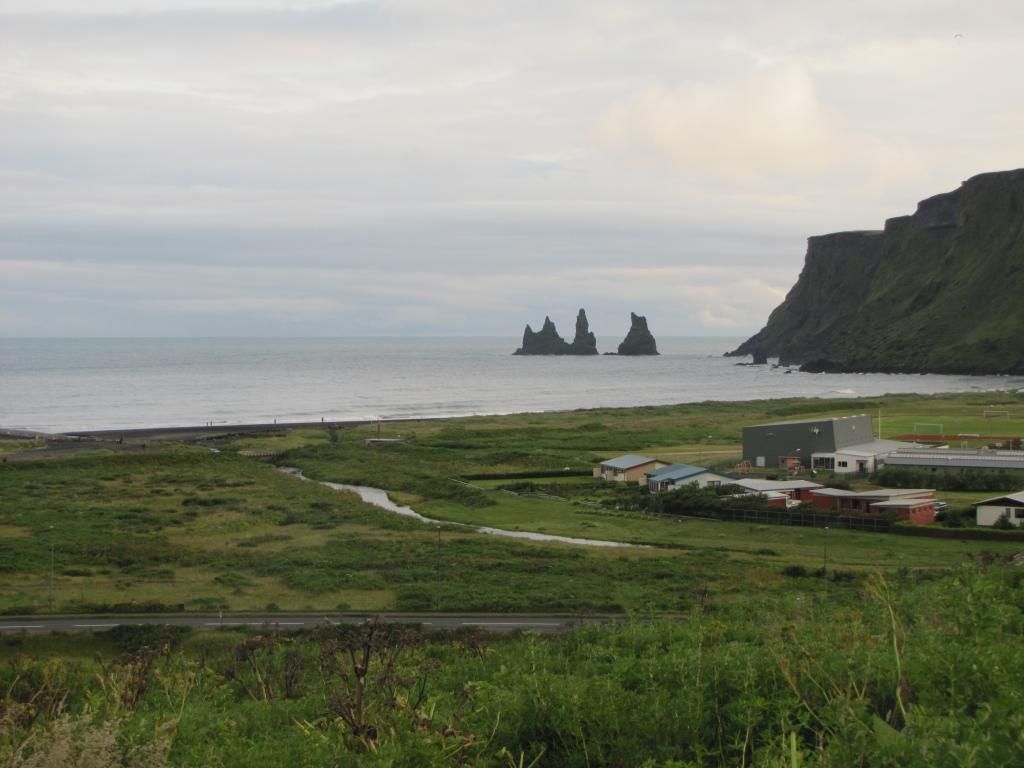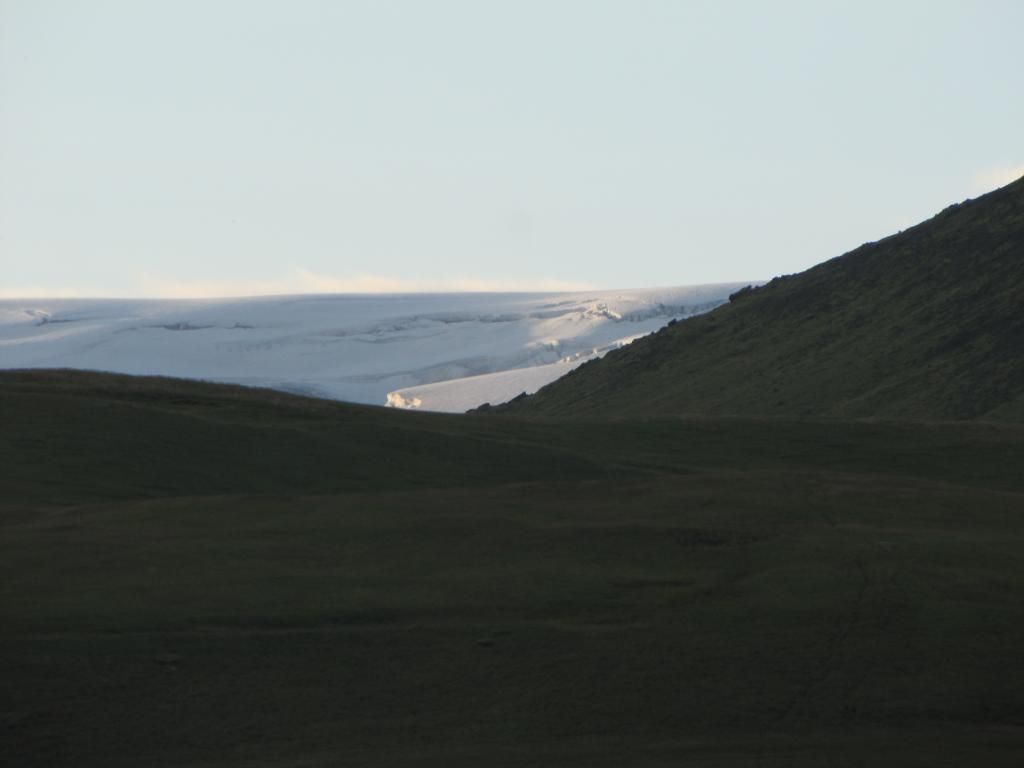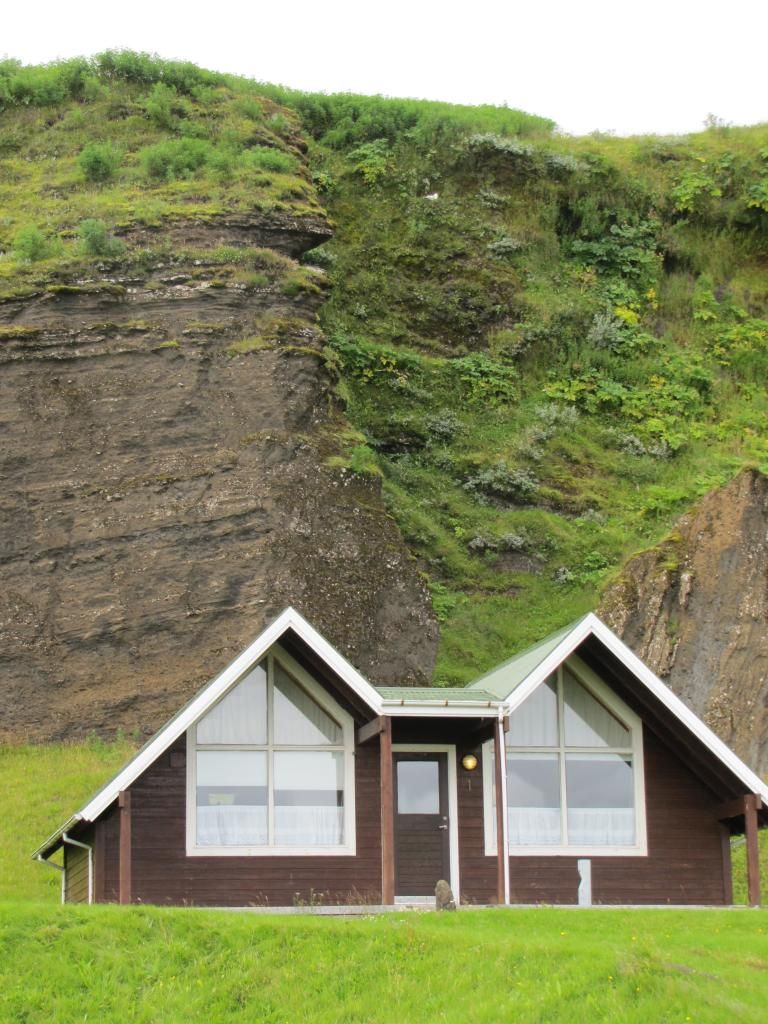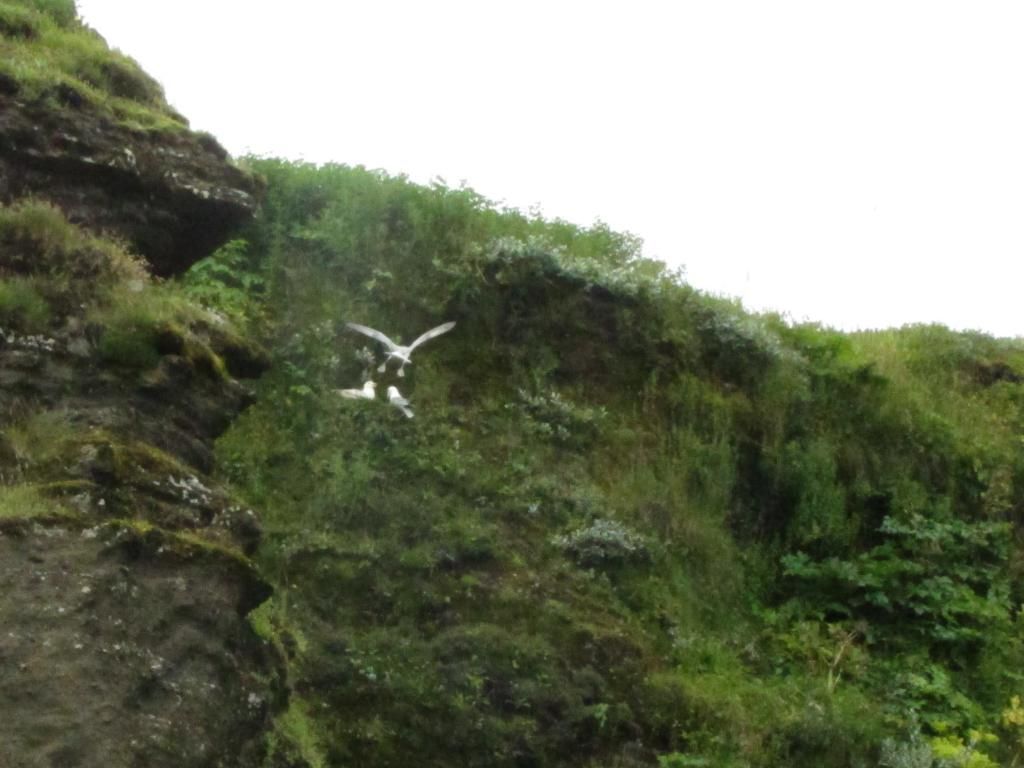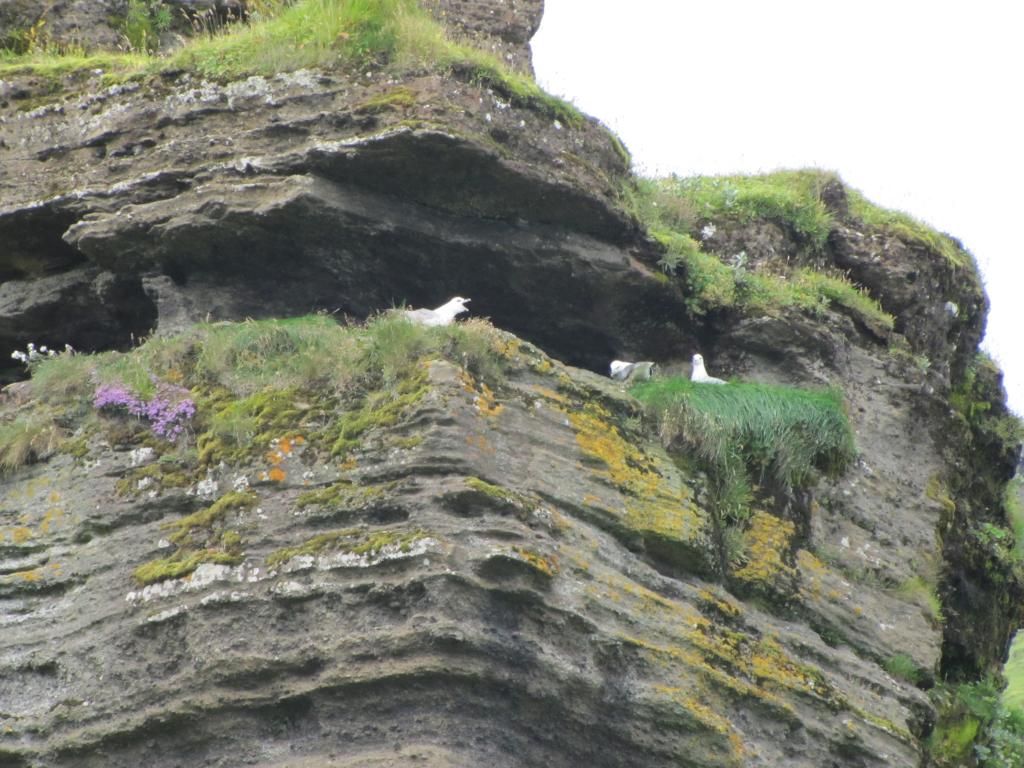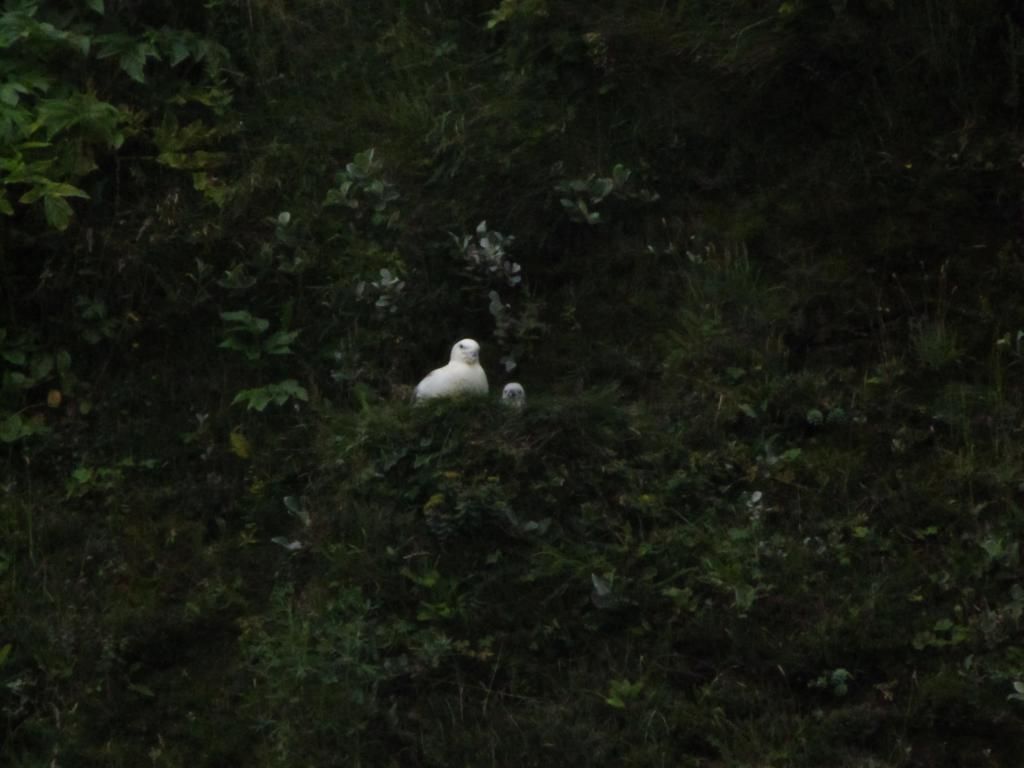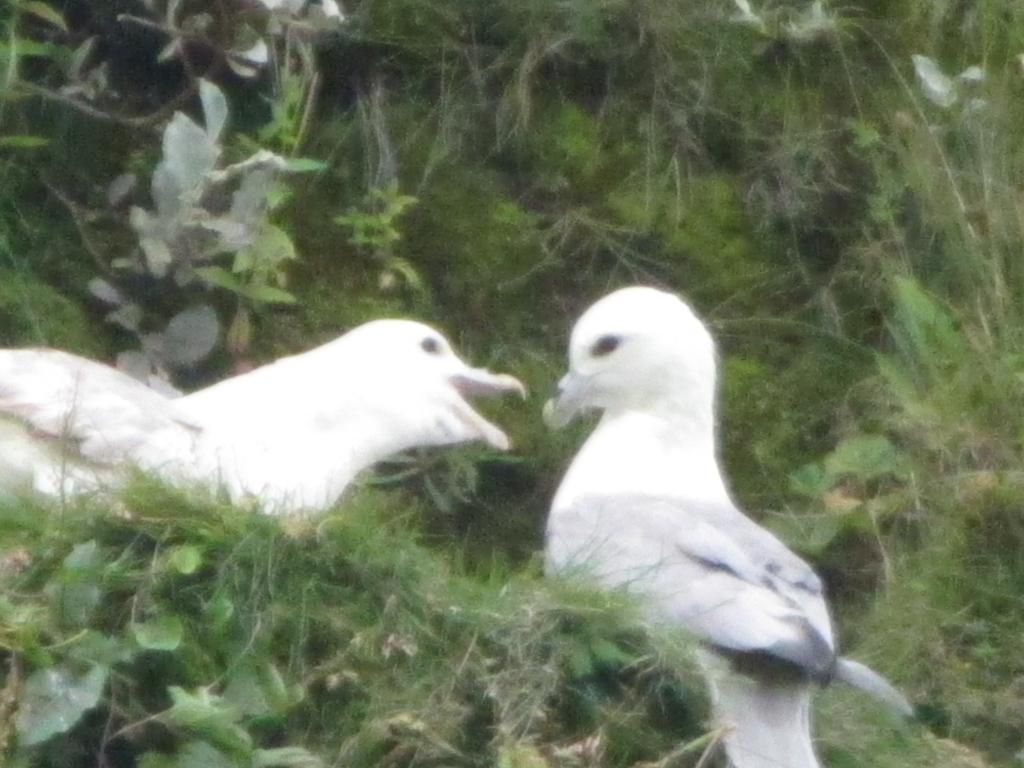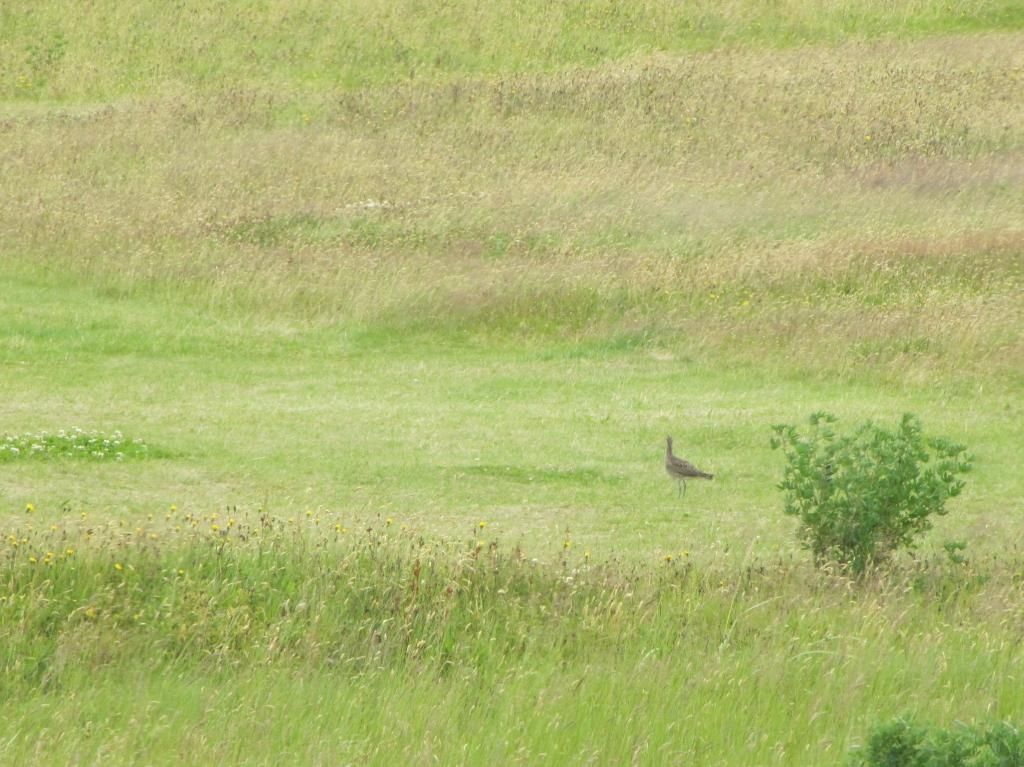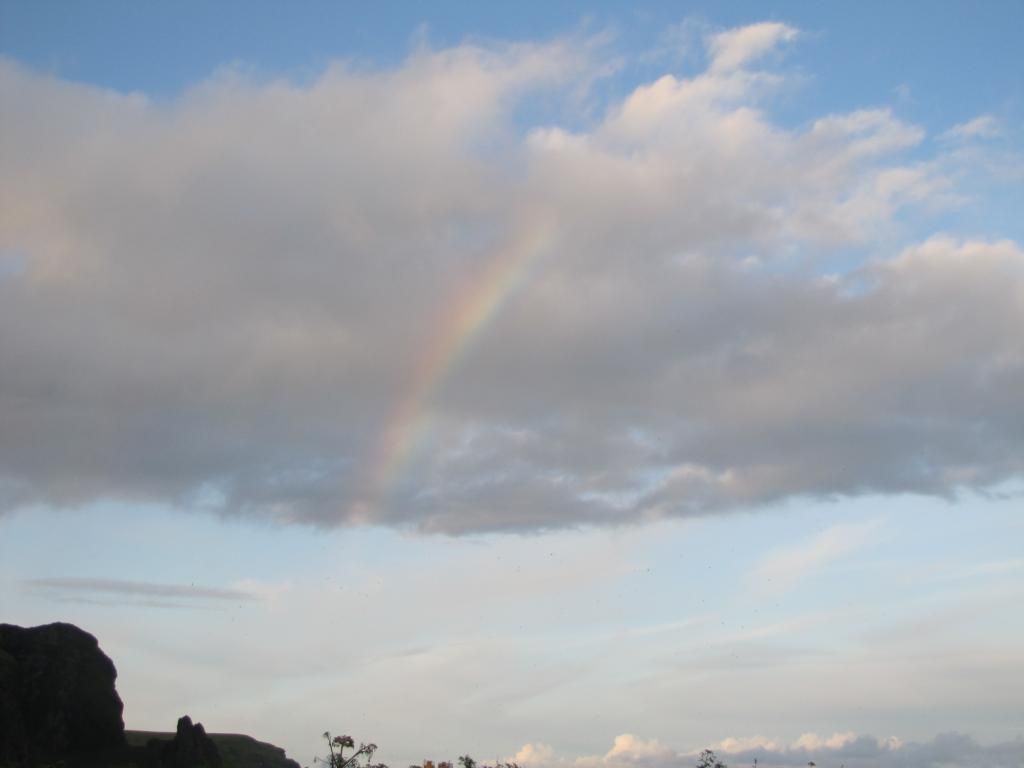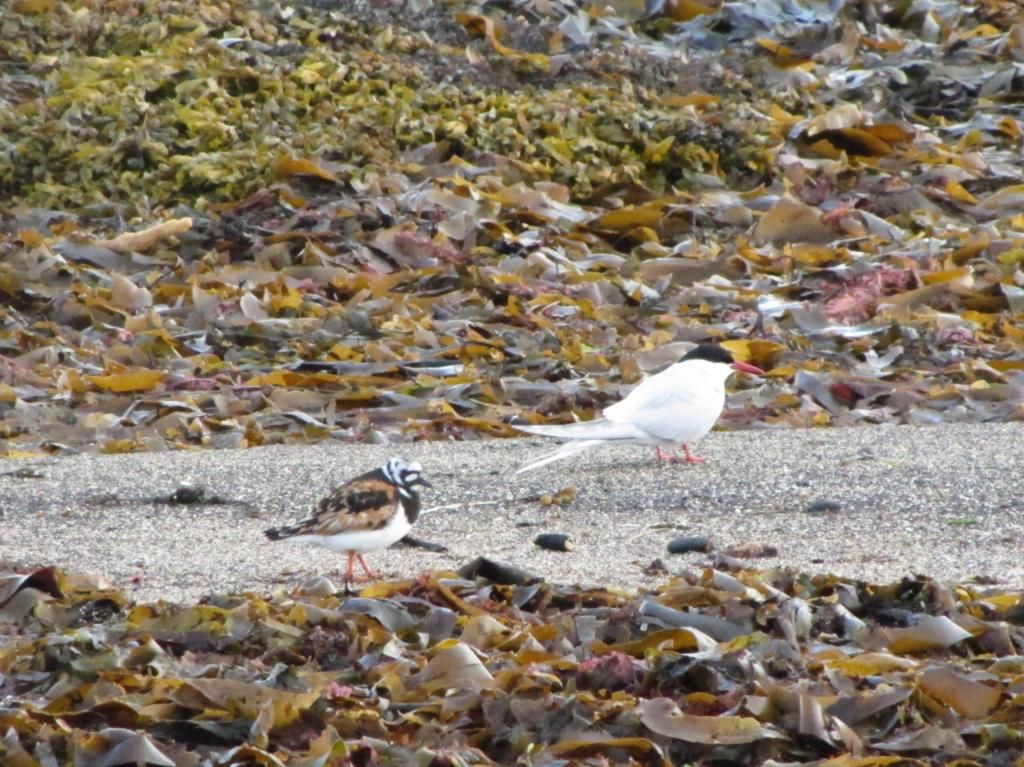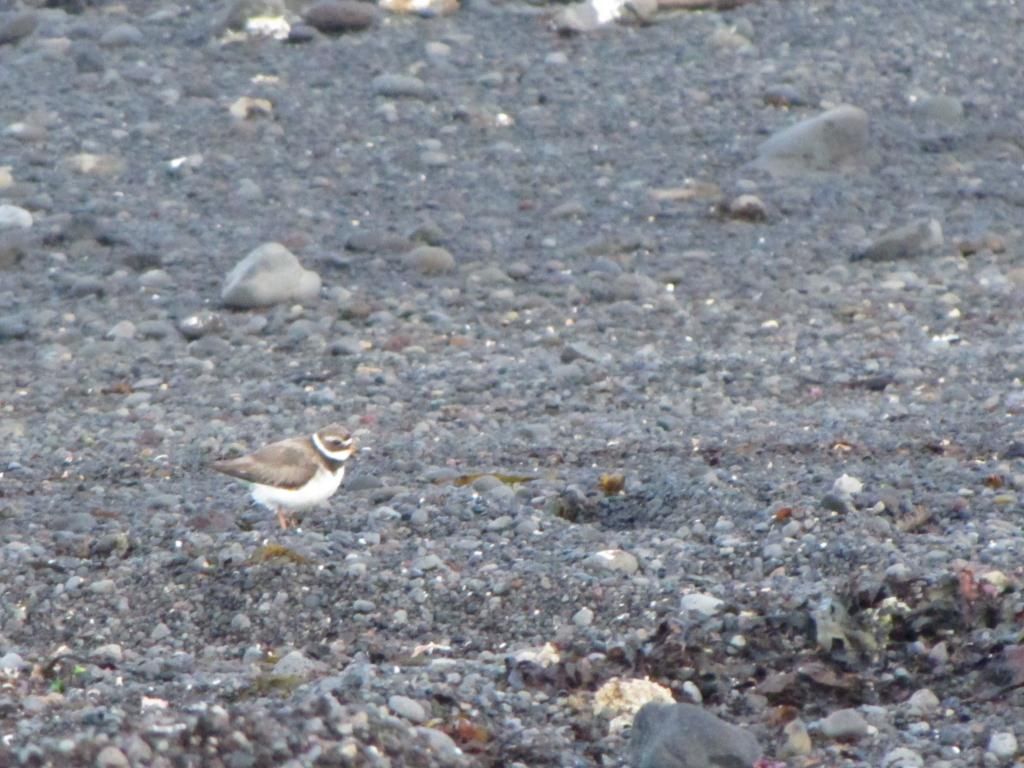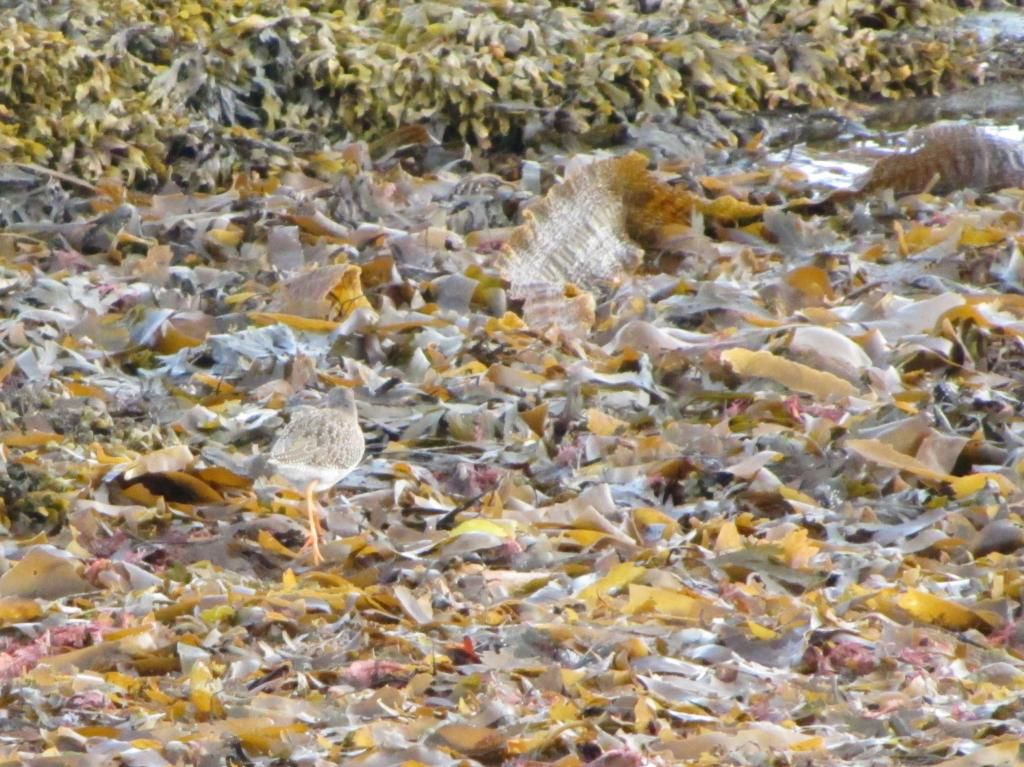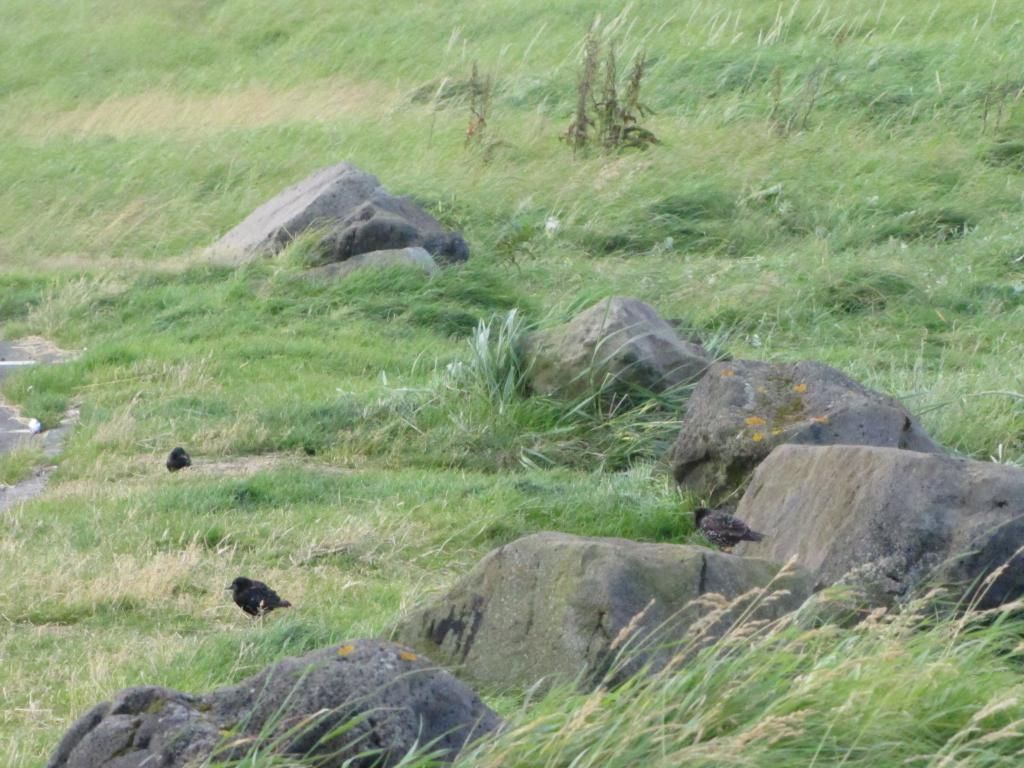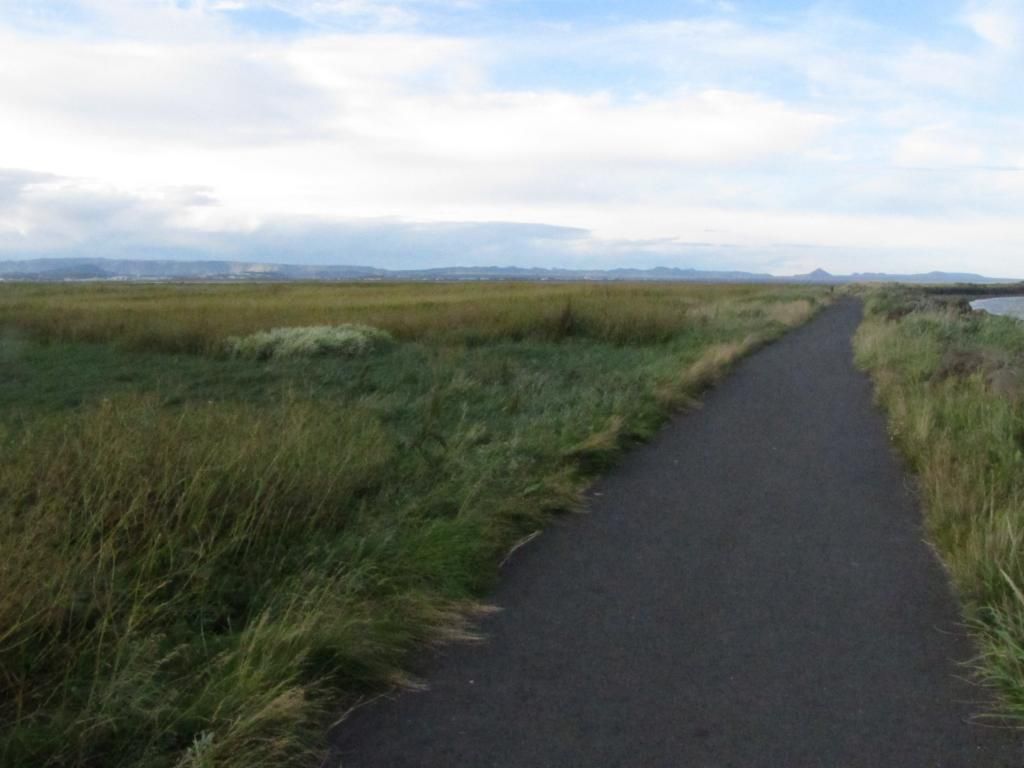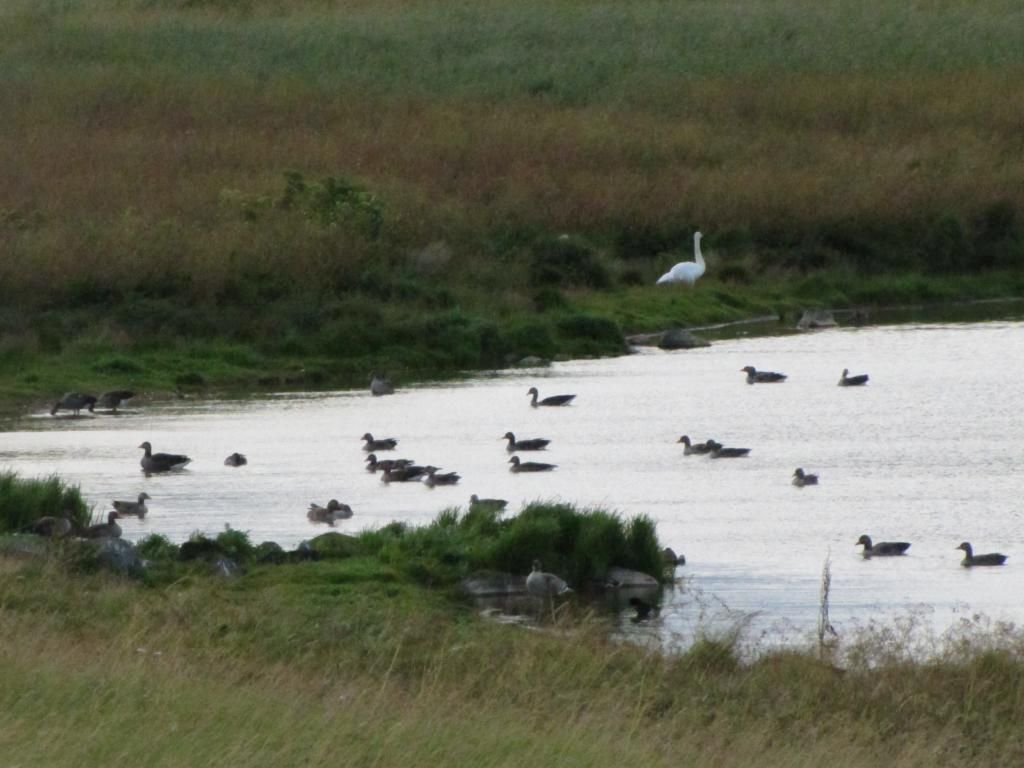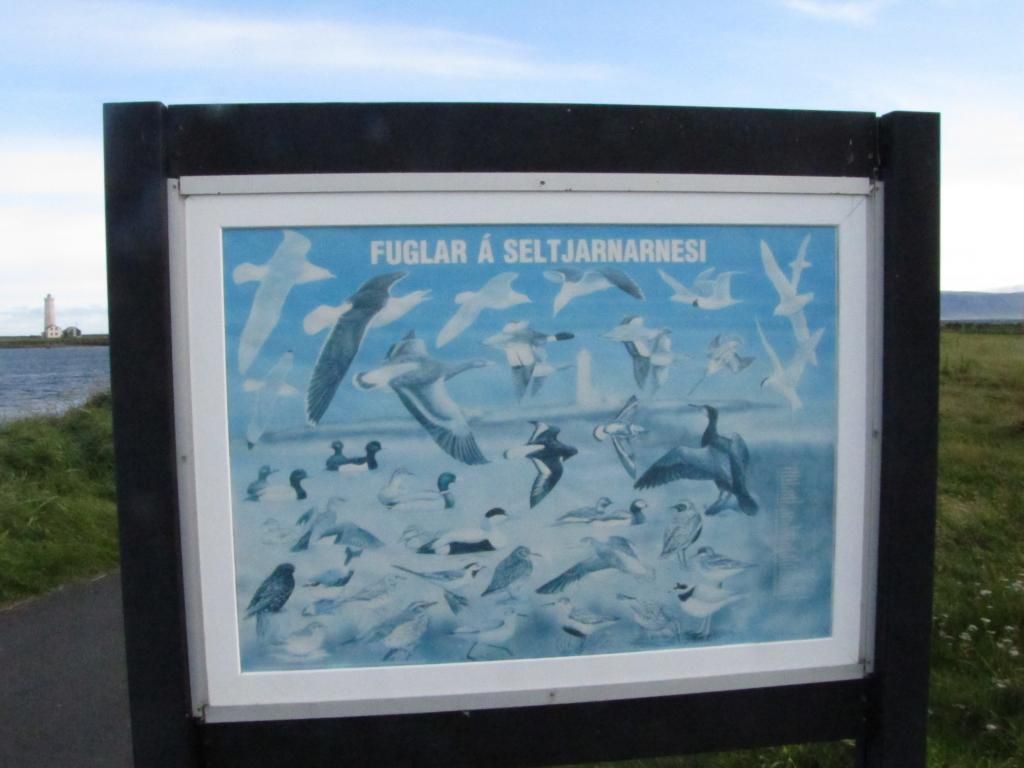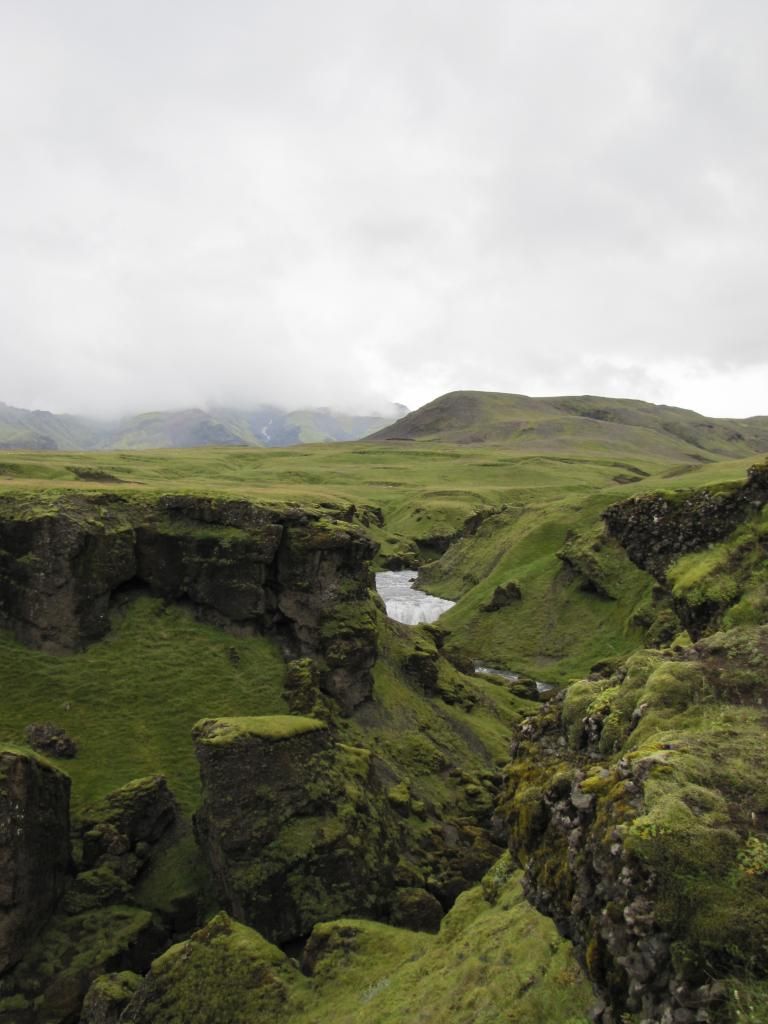 |
| Up the hill from Skógafoss |
Our hotel for our second day was a couple of hours away, so we headed out early on the Ring Road, destination: Vík í Mýrdal, the southernmost town in Iceland.
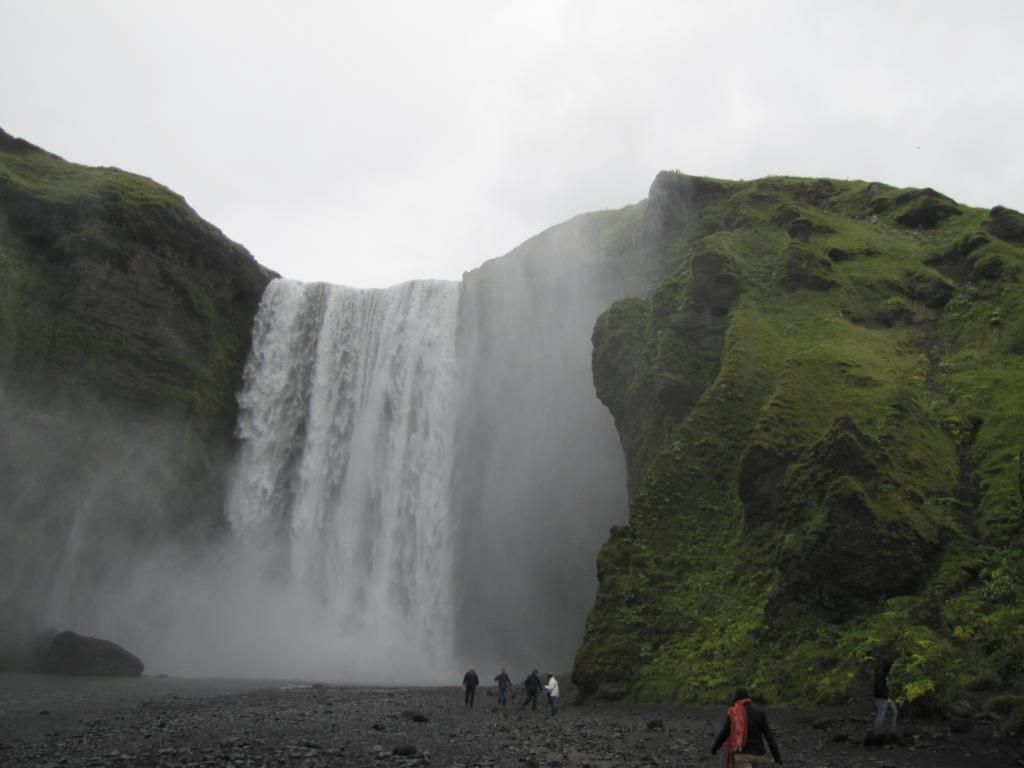 |
| Skógafoss |
Iceland is a land of a million waterfalls, but Skógafoss is a particularly thunderous example, so we stopped to take a look. As I was gazing at the powerfull falls, I noticed a large white gull-like bird with a stiff flight soaring around it. Northern Fulmar!
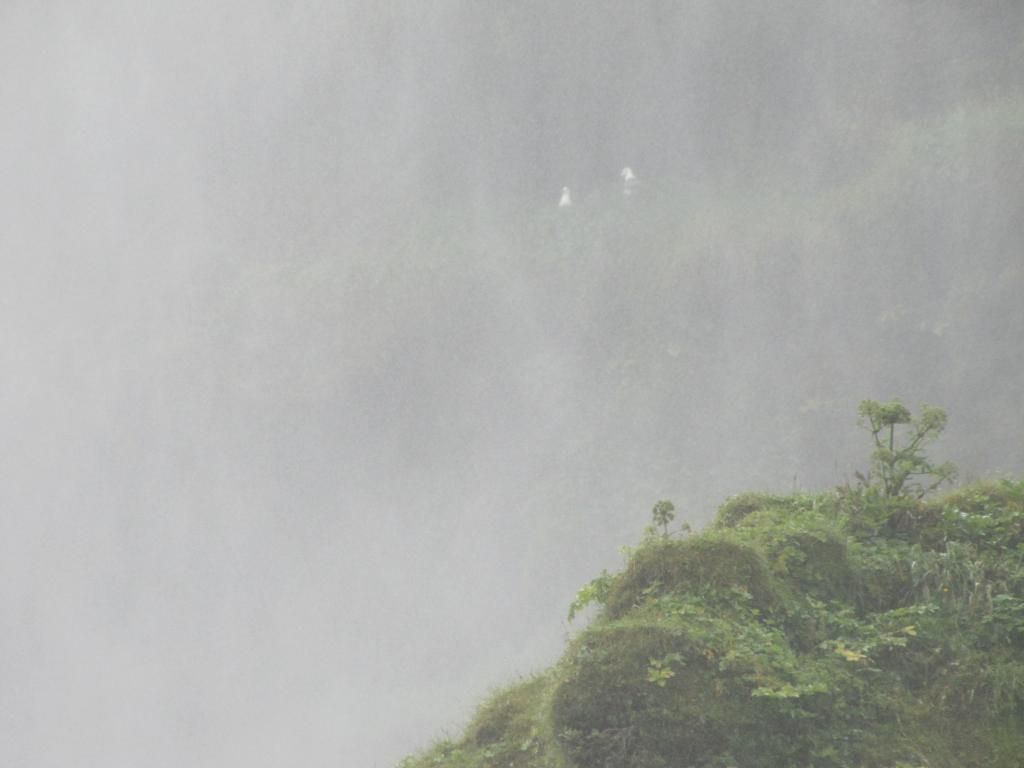 |
| Nesting Northern Fulmars |
Skógar, along with a large portion of the Iceland coast, is fulmar country. We decided to climb up the hillside besides the fall.
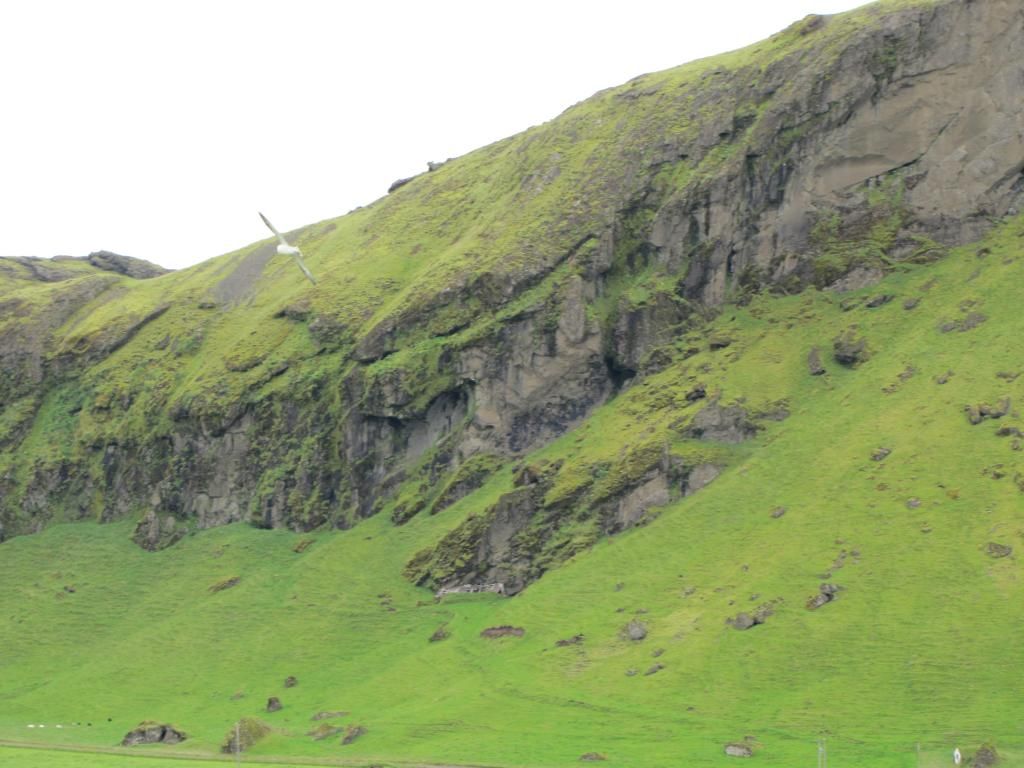 |
| Cliffside, with soaring Northern Fulmar |
Indescribably strange and beautiful, with great views of the sea, and vegetation-covered life-like rock formations (the origins of troll stories, no doubt).
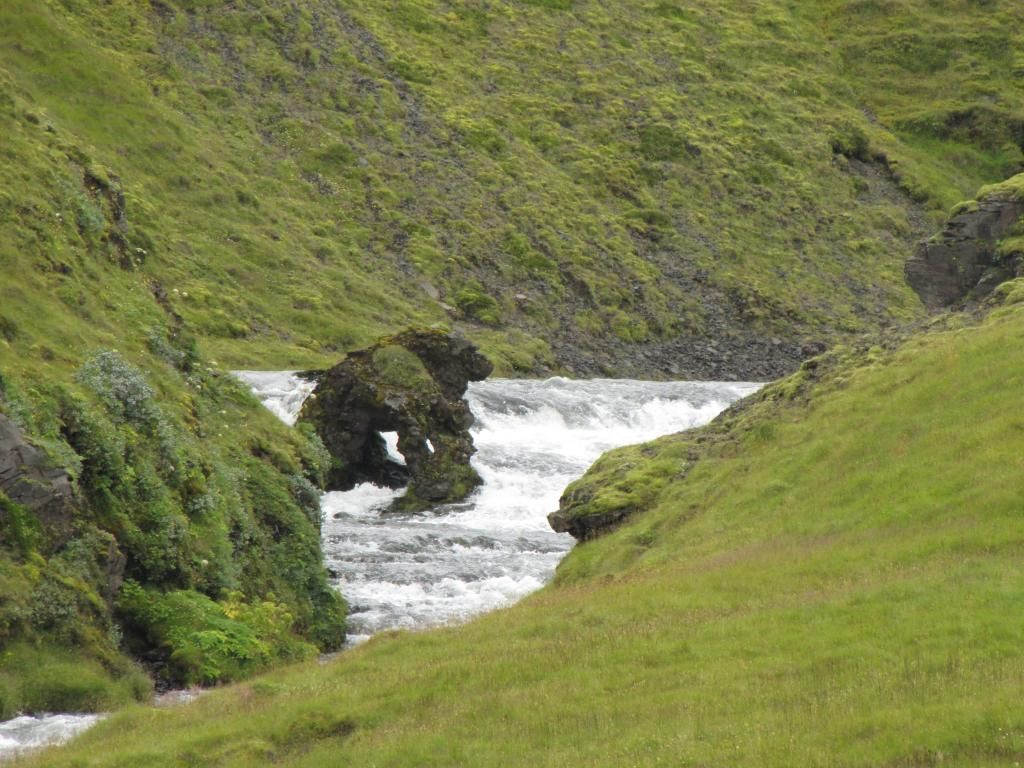 |
| This troll apparently was out past sunrise |
We also had glimpses of the glacier behind the hills.
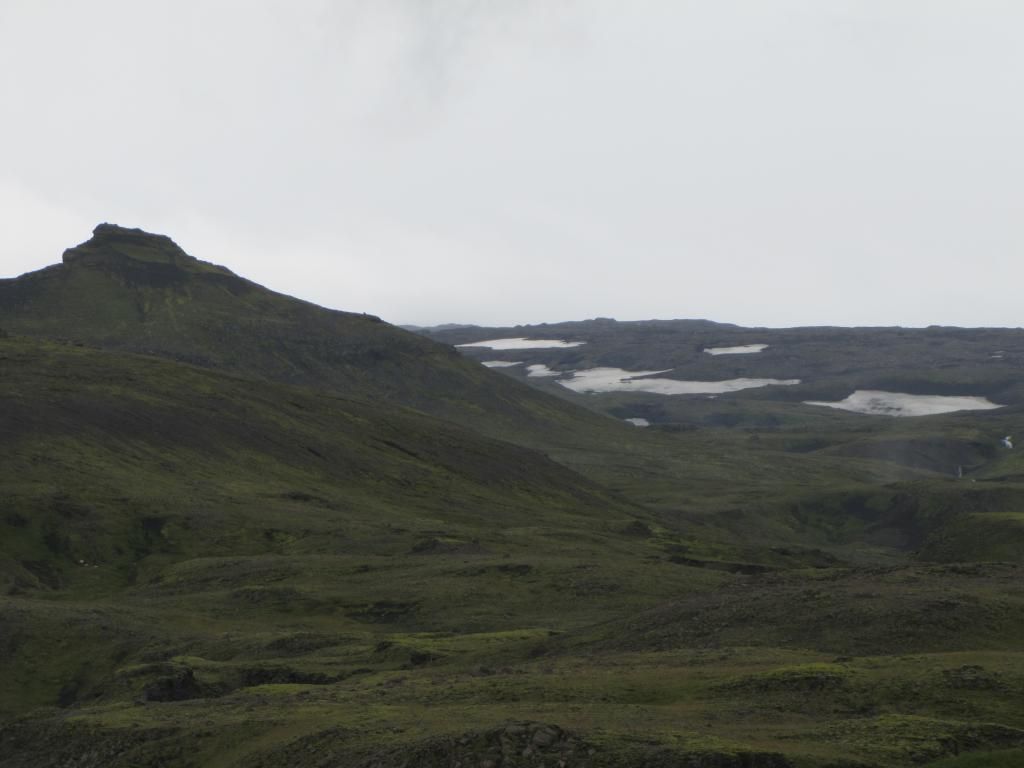 |
| Ice |
The most recent eruption (in 2010) was just west of here.
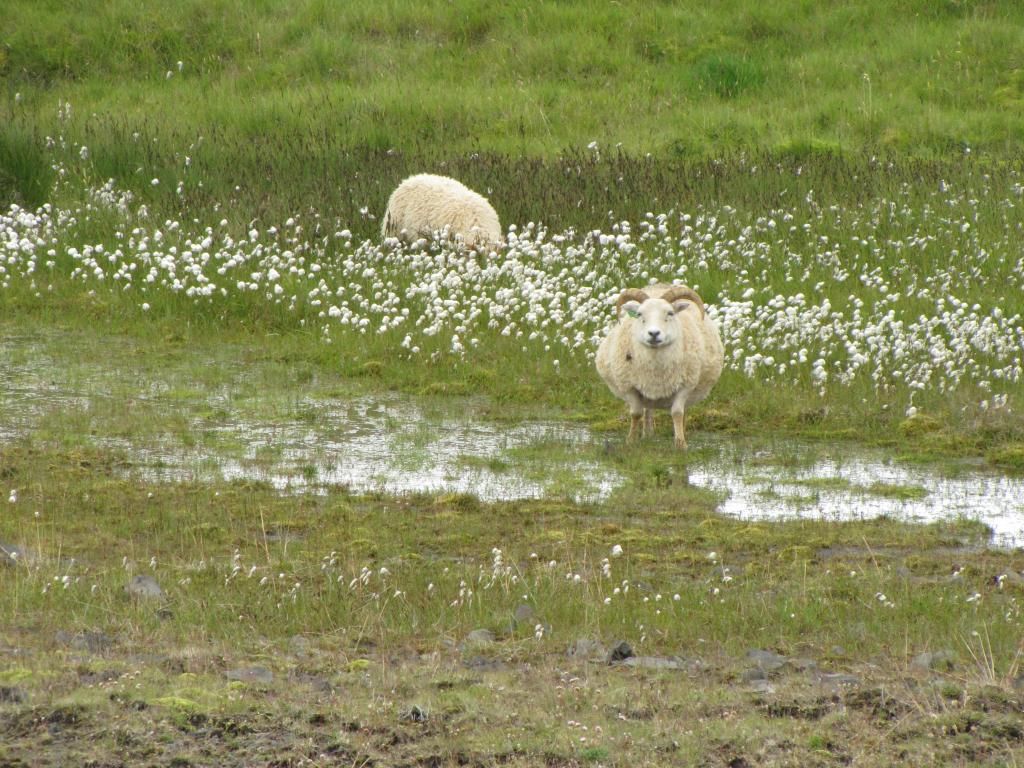 |
| Icelandic sheep |
It didn't matter how high we climbed, there would always be sheep.
 |
| Dyrholaey |
Our next stop was the top ten Iceland attraction, Dyrholaey, a keystone rock formation better appreciated from the highway than our vantage point. But after our Skogafoss climb we didn't have the energy to walk (or even worse, drive down a dirt road) to the other end. And at any rate, it didn't matter because
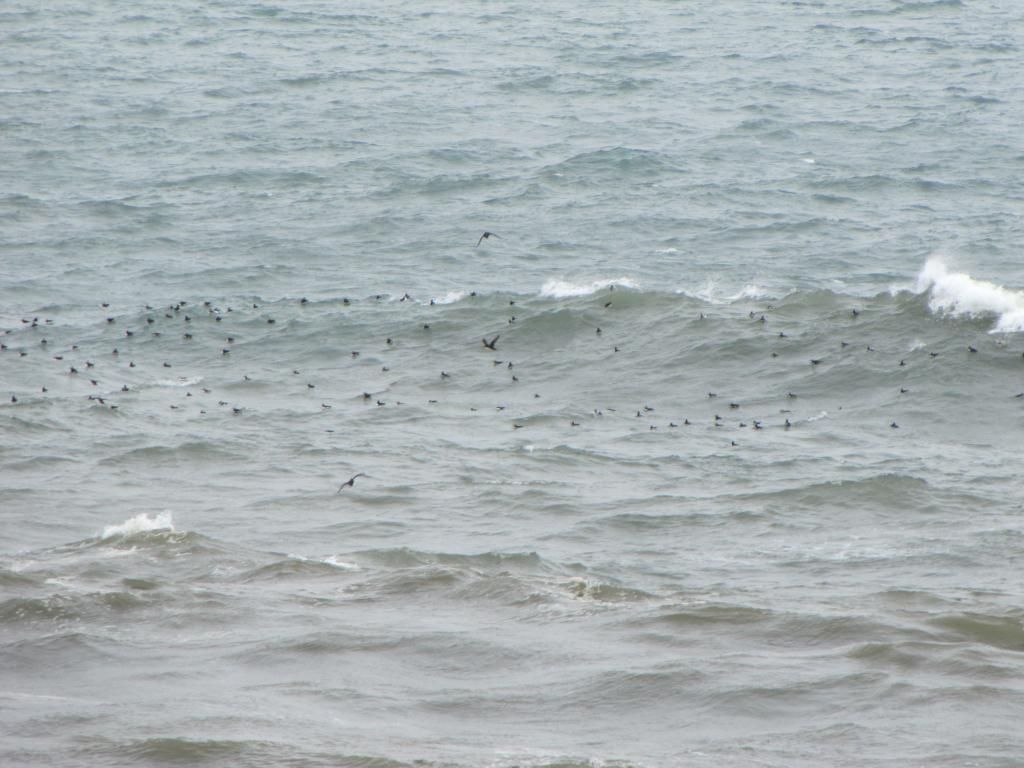 |
| Atlantic Puffin raft |
puffins. Yes, this is puffin country. They were flying all around and floating off shore.
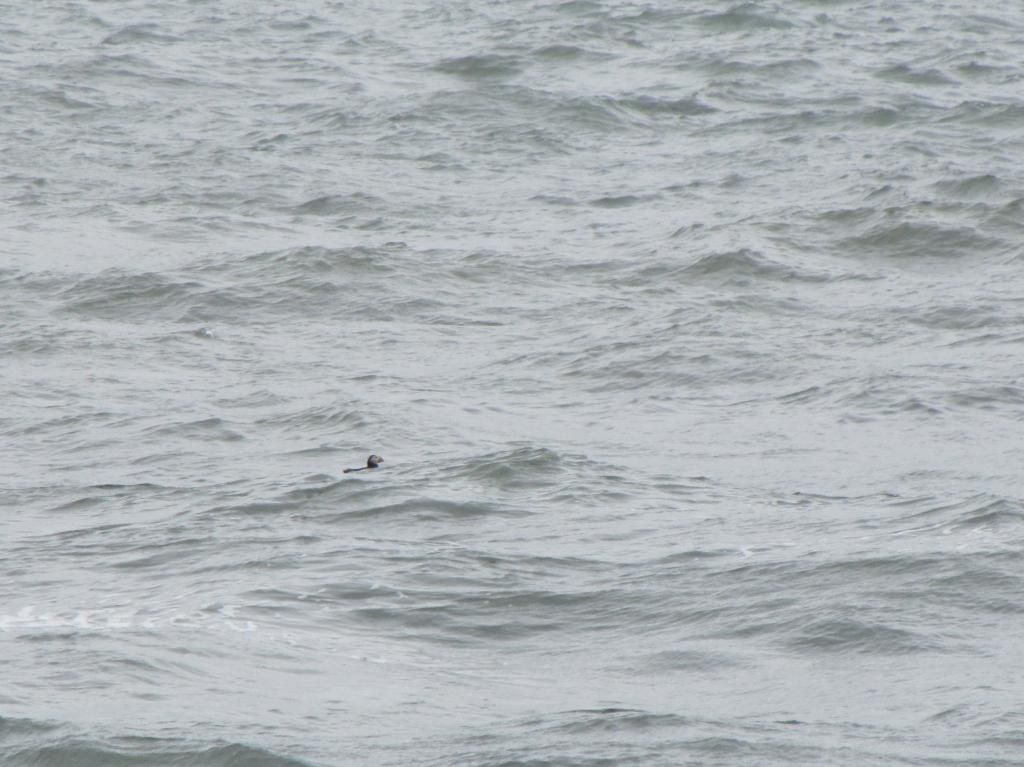 |
| Atlantic Puffin |
And every once in a while would allow for slightly closer views. Oh and Great Skua.
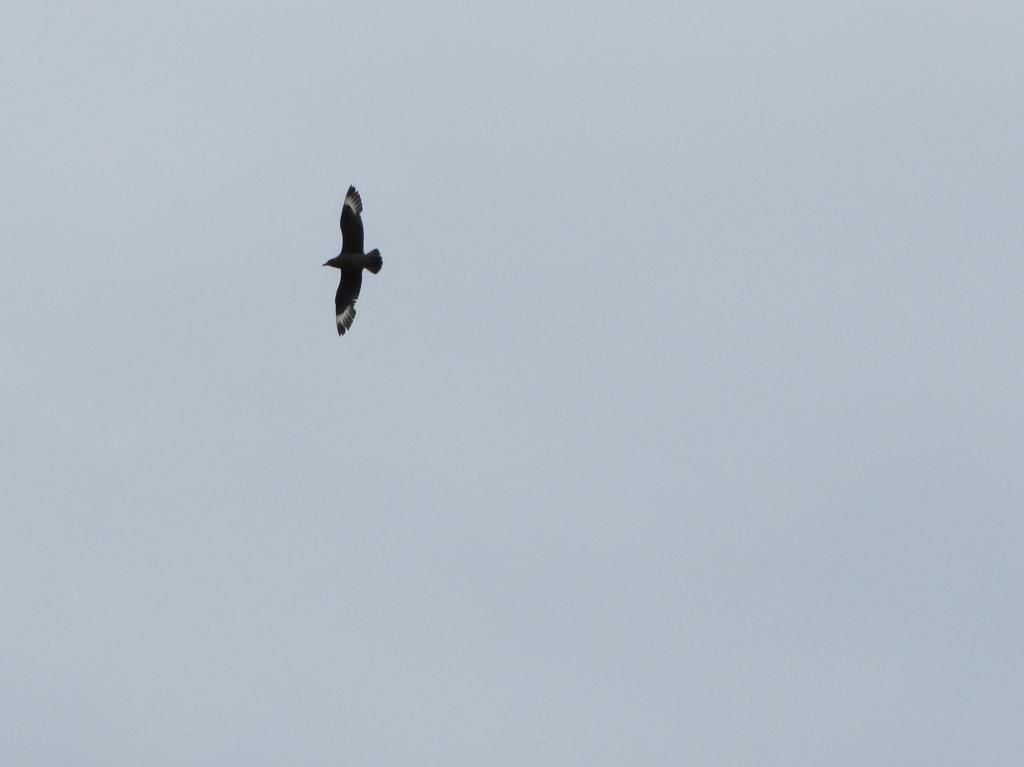 |
| Great Skua |
More on them in a bit.
